You can help stop the spread of exotic seaweed
STAFF REPORTER


Biosecurity New Zealand is reminding boaties and fishers to clean their anchors and fishing gear and reduce the risk of introducing or spreading any exotic seaweeds after a small clump of suspected Caulerpa brachypus was spotted on a Bay of Islands beach.
Biosecurity New Zealand director of readiness and response John Walsh said a local resident who had been at a beach at Te Rāwhiti, near Russell, did the right thing by taking a photograph of the 20cm seaweed clump they found and sending it in for visual identification.
“We did provisionally identify the seaweed as Caulerpa brachypus based on the photograph, but unfortunately the seaweed was no longer there when the person returned, and no more has been found on the beach, so we have been unable at this stage to collect a sample for confirmation testing. We do have a small team up there today doing beachbased surveillance.”
“We know that exotic Caulerpa can be spread through breaking into little pieces and can potentially spread over large distances by rafting on floating debris. This can happen by wave action, or when anchors and fishing gear are moved into or through weed beds, which is why keeping your boat and equipment clean is the best thing you can do to avoid spreading marine pests and diseases, including exotic Caulerpa.
“We have the strictest biofouling requirements for vessels in the world, as shown over the last summer cruise season, to help protect our marine ecosystems but it’s important everyone plays their part.
“If people think they’ve found this species of Caulerpa, they should not move it elsewhere but let us know. We thank the person who notified us in this instance.”
John Walsh says Biosecurity




New Zealand had spoken to the Northland Regional Council and local iwi and will work




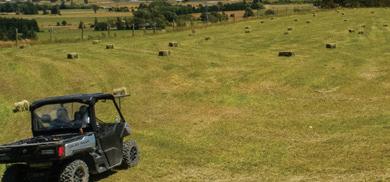
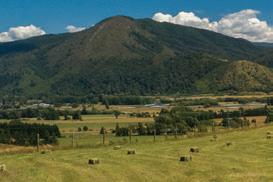
SEE PAGE 7

New and Used Tractors Top of the South from Karamea, Golden Bay, Murchison, Nelson Lakes, Blenheim, Nelson 32 King Edward St, Mouteka 03 528 9065 www.motfarm.co.nz ON farM SErvicE TEchNiciaN TOBY raNDaLL 027 233 9170 toby.randall@harcourts.co.nz www.tobyrandall.co.nz Team Toby Randall Top of the South rural “New ideas, Old school values!” PH: 03 544 5723 Main Rd Appleby, Nelson Agents for Sales, parts and service for all makes and models 24HR CALL OUT LOCALLY OWNED AND OPERATED CIRCULATING TO 14,500 RURAL PROPERTIES IN MARLBOROUGH, TASMAN, NELSON AND WEST COAST JUNE 2023 TOP SOUTH MONTHLY Farming Est 2001
Blenheim
Picton Tapawera Murchison
Reefton
Nelson Wakefield
Motueka
Takaka Collingwood
Kaikoura Greymouth
Karamea
Cassie Lundie of Richmond Town & Country Vet Clinic enjoying her work. Photo: Supplied.
Circulating
Contact us
News news@nmf.co.nz
Advertising Sales
Danielle Brown danielle@topsouthmedia.co.nz
Summa Donald summa@nmf.co.nz
Steve Page steve@nmf.co.nz
Accounts Queries accounts@topsouthmedia.co.nz
BARBARA STUART EDITOR

There’s a feel of winter in the mornings and evenings these days and despite the number of wet grey days in May, it’s been a great autumn for farmers. I can’t remember seeing our hills with so much feed going in to winter.
Recently I attended the Nelson Federated Farmers AGM where Gavin Forrest gave his retirement address to local farmers as he leaves his role as head of Federated Farmers, Wellington Policy Team. Gavin has been with Federated Farmers for

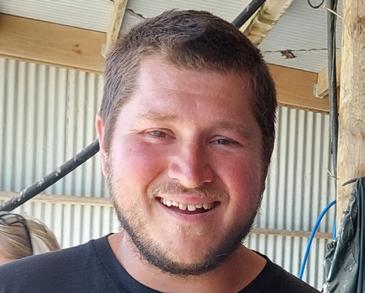
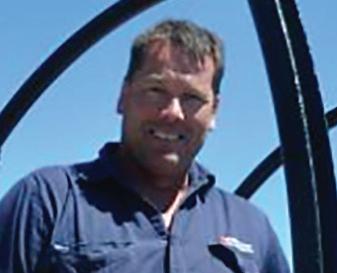
nineteen years with a space in the middle working for Westcoast and Tasman MP the Hon Damien O’Connor Minister of Agriculture, when he was then Minister of Rural Affairs. He also worked with Hon David Carter and MP Nathan Guy. Gavin’s background has been valuable for farmers in reaching results. The take home message for me was, “We didn’t always get what we wanted but getting second
best was still pretty good.”
Putting election politics to one side Gavin’s talk confirmed to me the importance of being able to sit down and talk issues through and not to hold entrenched views when seeking solutions. Quality of argument, logic and always acting honestly and in good faith, while coming up with a realistic solution can in most cases get the right result in the political realm.
At home on the farm, we all face a difficult year ahead, predicted profit margins are tight calling for careful spending and personal resilience.


We will get through this time and if we can’t there are always other options.
In the past farmers have walked off farms with very little to their names. The best path is always to walk while there is something left.
For those who might be facing this kind of situation, there is planning and budgeting help through the Rural Support Trust on 0800 787 254.
Fuel tax subsidy comes to an end
Back in March 2022 due to the increased cost of fuel from the impact the Ukraine conflict, the Government subsidised 25 cents a litre from fuel taxes and an equal amount from road user charges. Over the following months the subsidy was extended multiple times. Then in February 2023 Grant Robertson, Minister of Finance, announced that the subsidy would come to an end on the 30th of June 2023. We asked locals how the removal of the fuel tax subsidy will impact them, their families and businesses.
100%
“It does need to end as we can’t keep borrowing forever. It’s hard to find anything positive about it and it’s just another impact that will hurt the ag sector. We will suck up the costs for now and evaluate down the track if or when we will pass the increased cost on to our clients.”
“That’s a fight we can’t influence and win. Rural people will have no option but to lump it. We are all trying to survive with our 20% profit margin gone. Many sheep farmers will do well to break even this year.”
“It will undoubtedly affect a lot of people in different ways. Personally, we don’t go a lot of places, but I imagine it will add cost to everything delivered to Karamea. We have our groceries delivered from Westport so it will no doubt cost more. Unfortunately, farmers aren’t able to pass costs on as we don’t set the price of our milk.”

FILCO FARM & SPORT DEMAND THE BEST PROFILMATIC TRIMMERS Stainless steel blades provide exceptional cut quality Modular design provides cutting element configuration Fast operating speeds reduce tractor hours 03 578 5490 | www.bamarlborough.co.nz 2 June 2023 News Farming TOP SOUTH MONTHLY
locally owned and operated
563 Main Road Stoke, Stoke, Nelson 03 548 5900
52 Scott Street, Blenheim 03 928 4121
TOP SOUTH MONTHLY
to 14,500 rural properties in Nelson, Tasman, Marlborough and the West Coast every month. Farming
Got something to buy, sell or promote? Contact us: sales@nmf.co.nz Farming TOP SOUTH MONTHLY Editor’s corner
Isaac Ludlow Dairy Farmer at Karamea
Dwayne Solly Agriculture Contractor on the West Coast
Kerry Irvine Sheep Farmer at Tapawera
Young Farmer of the year grand final
ELOISE MARTYN
It will be an interesting competition for the O’Connor family from the West Coast as Nick O’Connor and his older brother Peter, both compete in the Young Farmers grand final competition being held in Timaru on the 6th - 8th of July.
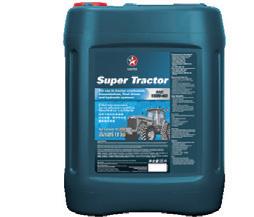
Nick, who grew up on the family’s dairy farm south of Westport, is in his third and final year of completing his Bachelor of Agriculture at Lincoln University.

He is also the chair for the Lincoln Young Farmers club which is one of the biggest clubs. 20-year-old Nick has worked hard competing in previous Young Farmer competitions to take the title as winner of Tasman Young Farmer of the Year which means he will compete representing Tasman in the grand finale.
“I’m really excited, I might get a bit nervous on the day but for now I’m excited and doing as much preparing as I can,” Nick says.
Peter, Nicks older brother, will be at the competition competing against Nick.
Peter is representing the Aorangi Young Farmers (South/North Canterbury.)
“He’s really switched on so it will be interesting,” explains Nick.
“It’s great doing it together and we have been practising quiz questions together.”

The competition is spread over three days and is the culmination of months of preparation, with contestants facing a range of challenges designed to test their skills, knowledge and resilience.
“I’ve been learning heaps by working on an innovation project report that is required, writing a speech and making a video,” Nick says.
Once Nick completes his Bachelor of Agriculture he has plans to travel to Australia, Canada and Europe before heading back to Canterbury to be involved in the dairy industry.
“Last Christmas I spent ten weeks over in Victoria helping with the harvest of barley, wheat and lentils, there was a heap of rain so took us a bit longer. It was good fun and I’m going to go back this year.”
He also spent some of the summer just been working on a sheep farm which he looks forward to being part of again via the practical element of his of degree.
“Studying has been pretty good, it’s really interesting and each week there is a practical element which I enjoy. We get to do twenty-eight weeks so of practical work and it’s a mix of dairy, sheep and other styles of farming which is great.”
The multiple competitions on offer through the Young Farmers Club are the only competitions available in New Zealand that are not limited to just one sector and focus on the younger age group – 16-31 years old.
“They are massive networking and learning events; they are also a show case of what skills the young people in the ag industry have. The whole club has been great helping me prepare, there are some really switched on characters in our club which is great to have.”
Tasman’s waterbodies need our help

TIM O’CONNELL
The health of our waterbodies and coastal areas is a hot topic both around the country and here in the Tasman region. A third of our District’s monitored waterways are in decline, and eight of our smaller rivers are in a particularly poor state. Clean, healthy freshwater is essential to the wider farming and rural sector. At the same time, farming, agriculture and horticulture are going to play an essential role in improving and protecting our waterbodies and coastal areas in the future. Tasman
District Council is developing a new plan that will protect our freshwater and marine resources for decades to come, and we want your input. We have identified eight draft Freshwater Managment Units (FMU) in the Tasman region: Waimea, Moutere, Motueka – Riuwaka, Abel Tasman – Kaiteriteri, Tākaka, Aorere – West Coast, Buller/ Kawatiri and Deep Moutere Groundwater. We think these FMUs are a practical approach to managing freshwater across a region the size of Tasman and will allow rules and regulations to be applied to

waterbodies in an integrated way ‘from the mountains to the sea’. We have created draft visions and value sets for each FMU based on what we have heard so far working with local communities and from feedback in 2022. Getting this right is a crucial first step in protecting our water bodies in the future.
Once the visions and values are finalised, they will form the outcomes and objectives that we achieve by creating rules and requirements.
If something isn’t included in the vision and values for an FMU, then it won’t get included in the final rules and


requirements. Tell us what you thinkGiving us your feedback on the draft visions and values is the best way to get your voice heard when it comes to the future of the water bodies and coastal areas in our region. We would now like to know your thoughts on whether the draft visions and values reflect your long-term wishes and aspirations for how you want our water bodies to be in future.
Visit shape.tasman.govt.nz/ mountains-to-the-sea/freshwater-management-units.
Live Local. Shop Local. Love Local! We’ll make sure you’re good to go! local for all your automotive (Cars, Caravans, Motorbikes, Trailers & Tractors) • Wheel Alignments & Tyres • All Vehicle Servicing & Repairs • Petrol, Diesel & LPG P: (03) 541 8121 F: (03) 541 9325 67 Whitby Road, Wakefield E: admin@wasl.co.nz W: www.wasl.co.nz 67 Whitby Road, Wakefield P: 541 8121 www.wasl.co.nz Lubricants to keep everything running smoothly Wide range of stock. 800ml – 200L by arrangement. News Farming TOP SOUTH MONTHLY June 2023 3
Nick O’Connor who will be representing the Tasman region in the July Young Farmer of the year grand final competition.
Photo: Supplied.
Unified, credible animal evaluation index could lift dairy farmers’ profit
Dairy farmers could unlock additional potential profit using a single national animal evaluation breeding index that incorporates genomics.
DairyNZ – through subsidiary New Zealand Animal Evaluation Ltd (NZAEL) – is working to help make that happen. They believe creating one animal evaluation index would ensure breeding decisions are made consistently. This single evaluation will be co-ordinated by New Zealand Animal Evaluation Ltd (NZAEL) – as an industry-good, credible source of data available to everyone to use. The sector is currently using three Breeding Worth animal evaluation indexes. DairyNZ chair Jim van der Poel says this creates confusion in the sector –and sub-optimal outcomes. “We believe the best way to help dairy farmers achieve the highest rate of genetic gain in their herd is to have one independent Breeding Worth (BW), including genomics and involving all the industry players.”

Genomics allows for better and earlier predictions of the desirable and undesirable traits of bulls and cows. Early predictions mean identifying the best bulls sooner, so farmers can make better breeding and culling decisions. These are key in enabling the dairy sector to remain internationally competitive, and for increasing farm profitability and sustainability.
New Zealand’s genetic gain has remained steady for more than 10 years, but it can be better.

“We’re falling behind other countries, largely because we don’t have a whole-of-sector approach and because we’re not really us-
ing independently calculated genomic selection to identify and use elite young bulls,” Mr van der Poel says.
“For example, Australia, the UK and the US have driven more accurate animal evaluations of young bulls using genomics, which has given farmers greater confidence to use genomic information and young sires.
“We can make faster, more informed breeding decisions that will help farmers increase yields, improve efficiencies and breed
herds that are easier to farm and have a lower environmental footprint.” Through NZAEL, DairyNZ has proposed an accurate, inclusive and independent operating model that it believes will help the sector achieve a better rate of genetic gain and will fairly reward participants. This proposed model will be conducted by NZAEL, the industry-good organisation for animal evaluation that manages the National Breeding Objective (NBO) – to help farmers breed dairy cows
that efficiently convert feed into profit.
Mr van der Poel says a unified, sector-wide approach would help realise the full benefits of genomic information and close the gap between New Zealand and its international competitors.
“It will give farmers the most accurate data to compare bulls and cows, building their confidence and increasing genomics use in New Zealand. Making this information available to all dairy farmers enables them to improve
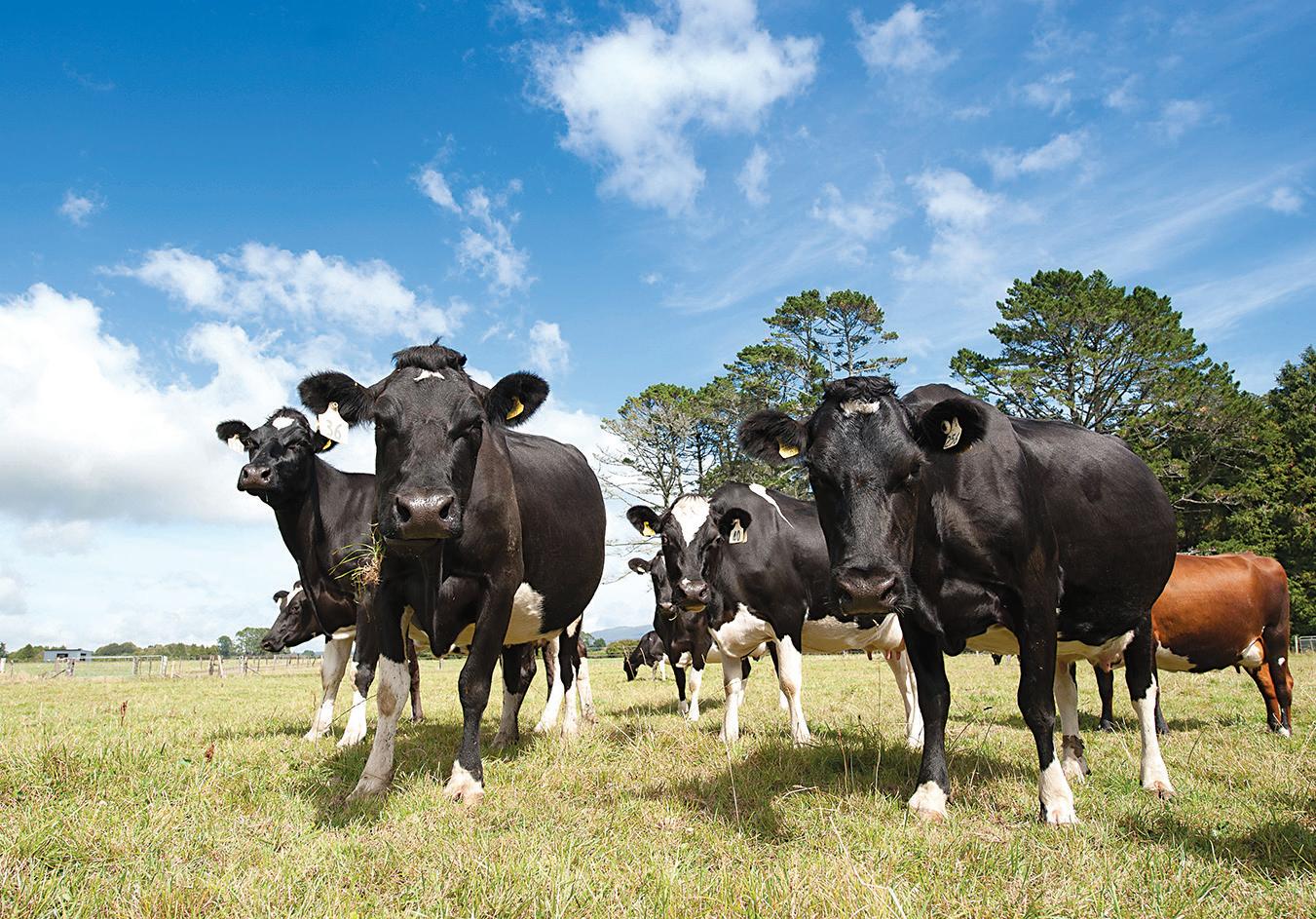
their herds, which will help lift the performance and profitability of the New Zealand dairy herd. “Collectively, through better rates of genetic gain, we could unlock potential additional sector profit of $136 million every year.” Dairy farmer and sector feedback is being sought on the proposed operating model over the next six weeks.
Consultation closes at 5pm on June 27, 2023. To have your say visit: www.dairynz.co.nz/better-BW
Season finished for seasonal workers

BARBARA STUART
Seasonal workers employed by the Registered Seasonal Employer program Daniel Wilkinson and John Reveag arrived in New Zealand along with many others from the Islands last October to work in orchards at Riuwaka, near Motueka.
“NZ is a great place to make money for people from the Islands,” John says. When I caught up with John and Daniel one Sunday outside a Motueka cafe they talked of their families at home and how they were looking forward to getting back to them. Both men came from Motalava an Island in the Banks group of Vanuatu but live in different villages. John is married to Evana who

he loves dearly, the couple have four girls. He plans to use the money he earned in NZ to continue building a house for his family. “Working in NZ has been a good opportunity,” John says. “The cyclone season is a worrying
time on Motalava.”
Now the NZ weather is getting colder Daniel is looking forward to returning to Motalova where he and his wife Salina, have two daughters. He is planning to ontinue building his family home.
G RA PES W ANT E D All varieties considered Competitive rates | Favourable terms | Great team Viticultural suppor t and exper t advice provided Contact Cleighten.Cornelius@accoladewines.com 03 520 6011 Ta e e adv t e. 4 June 2023 News Farming TOP SOUTH MONTHLY
Genomics allows for better cow trait predictions. Photo: Supplied.
John Reveag and Daniel Wilkinson. Photo: Barbara Stuart.







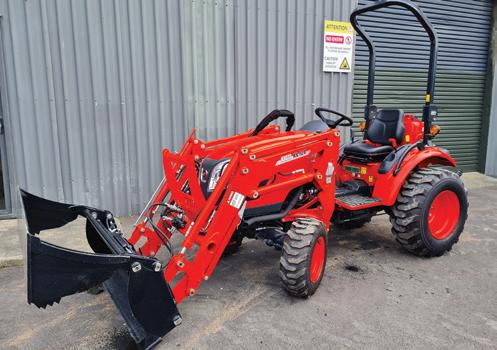
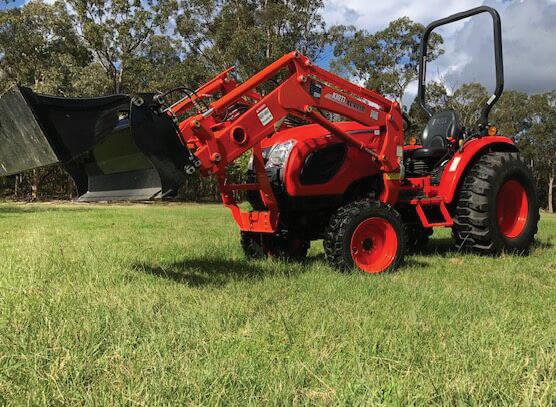
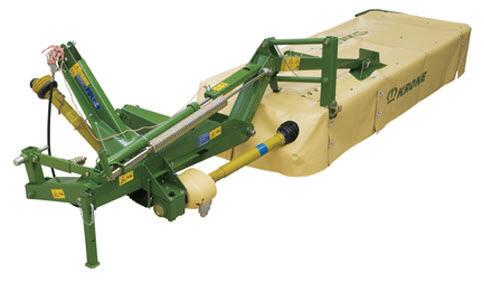




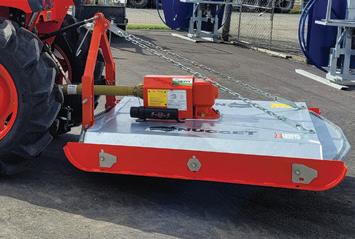


PH: 03 544 5723 Main Rd Appleby, Nelson 24 HOUR CALL OUT AVAILABLE TRACTORS AND FARM MACHINERY Full service facility for all makes of tractor, baler, mower etc... Parts for all makes and models - All oils, lubricants, filters and wearing parts BMTT FINANCE AVAILABLE ON ALL NEW AND USED TRACTORS AND EQUIPMENT Nelson Dealer for Sebco Fuel Tanks
JCB
Krone
Husqvarna
Sam
Now in
Berti
Hansa C13 PTO
$6,083+GST McIntosh
bale kit $25,740+GST Howard
1.2 – 1.8mt
Vicon
Fence
Rata Implements from $1,730+GST Hustler
Hands $3,890+GST Advert Farming TOP SOUTH MONTHLY June 2023 5
Kioti
CS2610 with FEL $24,700+GST
Kioti
CK3310 with FEL $33,980+GST
Kioti
CK3710 with FEL $38,900+GST
55Z-I Mini Excavator from $98,000+GST
Easy Cut R320 Mower $32,900+GST
Ride-on Mowers from $4,600+GST
Orchard Spreader $55,000+GST
stock
Park P 180 Mulcher $12,765+GST
Chipper
Double Bale Feeder with square
Slashers
from $3,675+GST
PS403 Spreader $4,480+GST
Pro Post Drivers from $10,500+GST
Soft
Increased risk foot and mouth disease
ELOISE MARTYN
“New Zealand has never had a case of foot-and-mouth before, and we want to keep it that way,” says Mary Van Andel, Ministry of Primary Industries Chief Veterinary Officer.

“We are continually readying for the unlikely event of a foot and mouth disease outbreak in New Zealand and there are robust biosecurity controls in place to prevent this, but the effects of an outbreak here would be significant on our people and economy.”
Foot and mouth disease is considered one of the most serious livestock diseases in the world. It is a virus that only infects cloven-hooved animals. An animal is cloven-hooved if its foot is divided in two.
In New Zealand this includes cows, pigs, sheep, goats, deer, alpaca and llama. The disease doesn’t affect other animals, such as rodents, cats, dogs, birds, or horses.
Foot and mouth is an animal health disease, it has no significant health impacts on humans. Even though it has a similar name, it is completely different from the human condition, ‘hand, foot and mouth disease’.
In May 2022 the terrible disease was detected in Indonesia, and a month later it was confirmed to be in the popular holiday destination of Bali. With direct flights resuming directly from Bali to New Zealand there are fears the devastating disease could spread via travellers and tourists and end up in our country.
In response to these direct flights
Biosecurity New Zealand has
ramped up border measures to prevent it sneaking in.
“We have worked with Air New Zealand to ensure travellers on direct flights are aware of the new measures and that they can reduce processing time by following declaration rules and wearing closed footwear,” states Mary. The new measures include additional risk assessment questions, baggage searches, footbaths and
Banks and companies making money while farmer’s struggle
BARBARA STUART
Nobody wins if processors or suppliers are strong but farmers are struggling, Dr Jacqueline Rowarth writes. She is an agronomist, farmer and science administrator.
“When banks declare record profits, it is natural for people to feel aggrieved. The banks are using our money, so we feel annoyed that they appear to be keeping it, rather than dropping the costs of transactions and borrowing.”
In the rural sector, it isn’t just banks that are reporting profits, it is the processors – the dairy and meat companies that farmers supply, many of which are co-operatives. It seems that farmers are surrounded by companies of different types making money while the farms are struggling with economic viability.
Dr Rowarth believes increasing productivity is key for future wellbeing and to pay for everything the country wants. Only through productivity gains will New Zealand be able to pay for everything it wants – not just the higher incomes that individuals desire, but also all the things that we need: infrastructure, education, health, law and order, science, culture and
social welfare.
Farmer and Oaklands Milk director Julian Raine says he feels very frustrated by the chain of costs farmers face.
“Our urban cousins don’t understand why farmers complain and why their communities are suffering, with families and children are going hungry. It’s because wholesome food comes at a cost.” Julian explains.
“The cost of production is compounded by environmental regulation, audits, freshwater plans, the Food Act, and processing audits for compliance. It’s turned many farmers into administrators instead of farming. All these costs work against farmers and are not conducive to productivity.”
Golden Bay dairy farmer and acting president of Federated Farmers, Wayne Langford responded to Jacqueline claims.
“Processing companies are also battling to protect their bottom lines.” He suggests any profits co-operatives managed to gain should eventually come through and show up in dividends and pay outs to farmers.
“Farmer shareholders will be quick to complain, if they don’t get their share of profits,” he says.
a ban on personal consignments containing meat products. A passenger arriving directly from Indonesia is:
• Using a dedicated baggage carousel and possessing lane.
• Facing additional questioning from officers.
• Being directed to disinfectant footbaths (passengers with closed footwear).
“Existing border measures for
passengers arriving on indirect flights are working well and will continue,” says Mary.
Ministry of Primary Industries has had a task force that has been working since June 2022 to update and enhance existing plans for the unlikely event of an outbreak in New Zealand. Lessons learned from responses to the cattle disease Mycoplasma bovis, and COVID-19 have been incorporated into the readiness planning.
This important work sees New Zealand well prepared to manage the challenge foot and mouth disease would present. “If there is a new outbreak in the world, we closely monitor and adjust our settings if needed,” Mary adds.
“We have been talking with our primary sector partners and it’s a timely reminder for farmers to maintain strong biosecurity practices.”
“That includes not feeding untreated meat products to animals, especially pigs, keeping overseas visitors away from stock for a week after their last contact with animals or infected places overseas, using the national animal tracing system (NAIT) and having strong general biosecurity plans on farm.”
Fall Armyworm in Golden Bay
ELOISE MARTYN
The destructive and unwanted Fall Armyworm has been detected in Golden Bay. Its arrival has arable and vegetable growers worried. The Ministry of Primary Industries are asking people to be on the lookout for it and to report any sightings, there are fears that it will travel to our region.

In January the Fall Armyworm was detected in maize paddocks in Hokitika. This was the first confirmed findings of the pest in the South Island ever. Recently the pest has been discovered in Takaka, Golden Bay The Fall Armyworm is very destructive and can feed on over 350 plant species. It is called ‘armyworm’ because in its larval stage, individuals gather in huge masses (‘armies’), which then destroy crops.
“It’s not good news,” says Stephen Todd, president of Nelson Federated Farmers and dairy farmer from the Tutaki Valley in Murchison.
“The pest is causing havoc in Asia, crops are under attack and its costing billions of dollars in lost production. Now it’s here we won’t be able to get rid of it so we need to look at
how we can control it and prevent it wreaking havoc on our agriculture sector.”
“Once it turns into a moth it can travel a long way each night, so it has the potential to spread at high speed.”
The insect can fly more than 100km per night, so with its presence close by it’s important that everyone is on the lookout.
“We need to do everything we can to control it starting with reporting any sightings so we can work out exactly where they are,” Stephen adds.
There are treatment options available in the form of several types of insecticides and pheromone traps. “Removing crops will not control the Fall armyworm, if you have it report it and you’ll get good advice on how to manage it.
Many dairy farmers like myself have small maize crops so we need to be on the lookout.”
“Everyone needs to play their part, report findings and support those who have invasions.
All growers, farmers, lifestyle owners and gardeners need to be on the lookout and actively scouting for caterpillars it’s really important.”
If you suspect you have the Fall
Fall armyworms are often mistaken for closely related species, you can distinguish Fall armyworm from other armyworm species by the white, inverted “Y” on the face and four raised bumps in the shape of a square near the end of the abdomen. In moth form it has dark gray, mottled forewings and a white spot near the extreme tip.
Armyworm on your property or in your garden, please refer to the contact information below. Since this is an unwanted organism, all findings must be reported to MPI:https://report.mpi.govt.nz/pest or using the app www.findapest.nz/, by email to FAW@mpi.govt.nz or by freephone 0800 80 99 66.
6 June 2023 News Farming TOP SOUTH MONTHLY
Mary Van Andel, Ministry of Primary Industries Chief Veterinary Officer.
Photo: Supplied.
Boaties and fishers can help stop the spread of exotic seaweed
FROM PAGE 1
closely with them and others to determine next steps in Te Rawhiti, including having divers in the water later next week looking for any further signs of Caulerpa brachypus, weather permitting.
“Exotic Caulerpa was first found at Aotea Great Barrier Island in July 2021, and then, later, at Ahuahu Great Mercury Island. It is very difficult to remove as it travels and grows easily, and there are limited treatment options.
$15 million R+D project for sustainable apple production

STAFF REPORTER
A government-backed, industry-led seven-year research programme has been launched, which will help achieve the apple industry’s goal to be the global exemplar of sustainable production practices.
The $14.77 million project, the largest the industry has embarked on, is being led by industry organisation New Zealand Apples and Pears Inc (NZAPI) and co-funded by the New Zealand Government through the Ministry for Primary Industries’ (MPI) Sustainable Food and Fibre Futures fund (SFF Futures) to the tune of $7.44 million, with the balance being funded by industry.
Programme lead, Dr Rachel Kilmister, says the industry’s vision of becoming sprayfree by 2050 is a vital part in its goal.
“New Zealand is already well placed globally and respected as the producer of the best apples in the world. The outcomes of this project will be a unique global selling proposition for New Zealand apples to the consumer as the safest, sustainable apples with enhanced environmental outcomes produced with no chemicals.
“To achieve this, the project will create innovative solutions to reduce and eliminate agrichemical use and sprays that will also reduce the industry’s carbon footprint. We must respond to
the growing demand by export markets for more sustainable production,” says Kilmister.
The programme aims to reduce pesticide application by 50% by 2030 through the use of targeted and smart technology such as remote sensing for detecting pests and diseases in real time enabling early intervention without spraying. Lure and dispenser-based technologies that prevent pests from entering the orchard will be developed. “New apple varieties are already being bred to be pest and disease resistant and will be critical for achieving the spray-free target,” adds Kilmister.
“Achieving a spray free status by 2050 would also
result in a reduction of industry greenhouse gas emissions by 35%.” NZAPI CEO, Terry Meikle, estimates the R+D programme will protect $1.1 billion of forecast revenue over the eight years from 2023 to 2030, by protecting existing high-value market share and targeted future growth.
“Economic returns to New Zealand will be realised through continued growth in export volume and value reaching $2 billion by the same year,” says Meikle. “This is a much-needed boost for our industry and needed to enable the industry to move forward. It is a significant project with full support from government and industry.”
“To minimise the spread, a controlled area notice (CAN) remains in place on 3 affected harbours at Great Barrier Island and over an area of the southwestern coastline of Ahuahu Great Mercury Island, which bans activities likely to result in its movement (fishing and boating). Mana whenua for the islands have imposed a rāhui on the same areas.
“At the original finds, we worked closely with Aotea and Ahuahu mana whenua and the local communities, along with Auckland Council, the Waikato Regional Council, and the Department of Conservation to collectively decide a course of action.
“If we establish through surveying that exotic Caulerpa is in Te Rāwhiti, then a CAN may be an appropriate response, but we will work with the community and seek advice from experts here and overseas.

“We continue to investigate possible treatment options for Caulerpa and are seeking advice regarding suction techniques and whether they could be viable in our conditions.”
John Walsh said Caulerpa was included in Biosecurity New Zealand’s national marine high-risk site surveillance programme, which surveys locations where there is a high volume of vessel traffic every six months. Whāngarei Harbour and Ōpua Marina/Waikare inlet in Northland are locations in this programme.
People can report suspected finds to Biosecurity New Zealand on 0800 80 99 66 or by completing the online reporting form at report.mpi.govt.nz.

Nelson Dental Centre in the heart of the city is your one stop for general dentistry and oral health services using digital technology to provide the highest quality of care and experience for your dental needs
Oral H ealth
We are seeing al p non-vaccinated Serving the community and keeping all patients and staff safe during this current outbreak of covid-19
Nelson Dental Centre in the heart of the city is your onestop for general dentistry and oral health services, using digital technology to provide the highest quality of care and experience for your dental needs.
Meet your professional care providers:
Nelson Dental Centre in the heart of the city is your one stop for general dentistry and oral health services using digital technology to provide the highest quality of care and experience for your dental needs

Dentists: Janette Wilcox, Amy Langfield, Pierre Gill
Oral Health = Total Health
Oral Health = Total Health
Meet your professional care providers:
Dentists: Janette Wilcox, Amy Langfield & Pierre Gill

We are seeing all patients vaccinated and non-vaccinated Serving the community and keeping all patients and staff safe during this current outbreak of covid-19
Hygienists: Deborah Pratt & Vikki Neilson



Meet your professional care providers:

Hygienists: Deborah Pratt & Vikki Neilson along with the friendly support team of dental assistants, practice manager and reception caring for your dental health and well-being.
Along with the friendly support team of dental assistants, practice manager and receptionists caring for your dental health and well-being.
Dentists: Janette Wilcox, Amy Langfield, Pierre Gill
Hygienists: Deborah Pratt & Vikki Neilson along with the friendly support team of dental assistants, practice manager and reception caring for your dental health and well-being
Locally Owned & Operated • GRAS S HARVESTING • BALEAGE • HAY • PIT SILAGE • GROUND WORK • SPRAYING • AIR SEEDER DIRECT DRILLING • MAIZE PLANTING & HARVESTING • EARTHWORKS • CARTAGE • SITE WORKS • DRAINAGE Paul 027 422 5893 Phil 027 372 9864 accounts@lesliecontracting.co.nz
Telephone: (03) 548 4445 Book online: www nelsondental co nz 41 H lif St t Mill A C k N l 7010
Telephone: (03) 548 4445 Book online: www nelsondental co nz 41a Halifax Street Millers Acre Carpark Nelson 7010
(03) 548 4445 Book Online: www.nelsondental.com 41a Halifax Street, Millers Acre Carpark, Nelson News Farming TOP SOUTH MONTHLY June 2023 7
Eliminating agrichemical use and sprays that will also reduce the apple industry’s carbon footprint. Photo: Supplied.
Cow collar technology “amazing”
ELOISE MARTYN
Agritech company Haletr was founded in 2016, the create electronic collars for cows that use sound and vibration to guide and contain individual cows without the need for fences.
Seven years in and more and more dairy farms are using them. The Halter company has just raised a whopping $85 million in capital from an impressive list of investors around the globe.
Halter says it is focusing on growing its core business, research and development.
Halter also claims that despite a slowdown in capital markets, investors were attracted to Halter’s ground-breaking technology that enables more efficient farming.
Michelle and Willie Coates, dairy farmers in the Haupiri Valley on the West Coast, implemented the Halter cow collar technology to their 730 cows in October 2022. “The reasons we implemented halter was a combination of available technology, staff well-being, productivity and mental health,”

TOW BEHIND MOWERS
TOW BEHIND MOWERS
TOW BEHIND MOWERS
explains Michelle.
“The system means a later start and earlier finish which prevents human burnout.”
The system enables farmers to remotely shift virtually fencing.
Halter says it’s a world-first system and has been designed to support farmers regarding staff shortages and labour challenges while lifting milking production and lowering inputs.


The Coates’s cows make two herds and prior to the Halter system it was taking on average two hours a day, 1 hour per herd, to bring the cows in for milking.
“Now staff don’t have to get up so early, the cows are at the shed waiting for them,” adds Michelle
“Our farm is 7km long, it’s a long narrow farm and previously someone had to put up at least six break fences a day, so by having no internal fences we are saving a lot of time and energy,” Michelle says.
“We haven’t let any staff go since implementing it, instead we are utilizing staff in other areas like weed control, maintenance and grazing blocks.”
The system also monitors the health, activity and be-
TOW BEHIND MOWERS
haviour of the cows 24/7.
“We had one cow that was stuck in an old drain. The system sent us a health alert for her indicating that she hadn’t moved for a while, so we headed out,” explains Michelle, “And here she was, stuck. Luckily, she wasn’t stressed just sitting there chewing but she needed to get moving.”
The collars are solar powered, and Michelle and Willie’s collars op-
erate off Starlink satellite which also enables emergency reception to the farm, which is hugely beneficial as they can only get coverage at the house and dairy shed. The collars are leased under a percow subscription model based on farmers’ required features. Halter retains ownership of the collars therefore it’s their responsibility for any maintenance. Over the last seven years, the Halter team
has grown to over 180 engineers, data scientists, farmers, designers and businesspeople.
“The tech team have been amazing and have also helped us on public holidays and after hours,” Michelle says.
“It is a major capital outlay but for us that was outweighed by the benefits, it is an amazing system that has changed how we farm for the better.”
Deer velvet in international demand
STAFF REPORTER
LOG SPLITTERS
Kohler engines FROM $4,160+GST
Kohler engines FROM $4,160+GST LOG SPLITTERS
Made in NZ
Kohler engines FROM $4,160+GST
Made in NZ
Kohler engines FROM $4,160+GST LOG SPLITTERS
“It’s been a complicated season and disappointing for some deer farmers despite the demand,” says Claire Parkes, a deer farmer from Wakefield.
LOG SPLITTERS
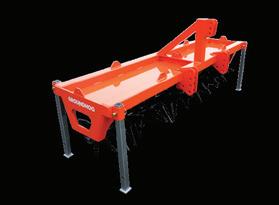




stock, motorised & tractor powered
CHIPPERS
CHIPPERS
Large range in stock, motorised & tractor powered
PTO Chippers - 3.5”, 5”, 7” and
PTO Chippers
Large range in stock, motorised & tractor powered
CHIPPERS AERATOR
CHIPPERS AERATOR


Nelson / Blenheim / Takaka / Westport / Greymouth
Nelson / Blenheim / Takaka / Westport / Greymouth
Available in 2.1m -3.6m
Visit us at 109 Bolt Rd, Nelson
The Korean food market contracts, for velvet, filled up quite early on this season and once filled the market dropped off significantly, due to economic uncertainty in China, impacting some farmers to the point they received around $10 a kilo less for their velvet. Another impact to the season was increased input costs that have gone up around 15% and for some essentials, such as fuel and fertilizer a whopping 25%.
been a positive outcome and hopefully bodes well for the future of venison.
products, and this is driving market growth.
these tonics,” explains Claire. These tonics are in demand and there are recommended health supplements for things such as pregnancy, anti-fatigue and immune support.
Claire has just attended the Deer Farmers Conference which moved venues, due to flooding, from Hawkes Bay to Ashburton. “It’s always great to see other positive people at the conference, and to nut things through in the industry.”
Nelson / Blenheim / Takaka / Westport / Greymouth
FREE DELIVERY to Nelson / Blenheim / Takaka / Westport / Greymouth
Visit us at 109 Bolt Rd, Nelson
2.1m -3.6m widths - NZ

Visit us at 109 Bolt Rd, Nelson
FREE DELIVERY to
Visit us at 109 Bolt Rd, Nelson
Nelson / Blenheim / Takaka / Westport / Greymouth
Visit us at 109 Bolf Rd, Nelson
Visit us at 109 Bolt Rd, Nelson

“The venison market took a big hit with covid in 2020 and we have still not gotten back to pre-Covid price levels. Many restaurants that closed over that period haven’t opened up again and that is still impacting,” Claire says.
The deer industry has been very proactive in diversifying markets which has
Following on from last season’s increase in demand for deer velvet, to South Korean health companies, the sector looks to be moving into a period of stability as demands keeps up with the increased volumes. 2021-22 season farm gate returns were $123 million, up 25% from the previous year and industry experts are expecting another 5% increase this season which has just come to an end.
Korea’s younger people are turning to natural health

“Last year there were around 32 new velvet products launched on the Korean market,” says Claire. In the past Korea has used our velvet mainly in tablet form mixed with ginseng, an herb meant to be rich in antioxidants. Now velvet is available in many forms excluding ginseng, which is proving to be popular, and is a common component in health tonics.
“If you think of a milk shake bar but its healthy tonics, you can walk in and dial up what you want, velvet is a very popular product in
“Farmers have been hit pretty hard with unreasonable regulations, it’s good to come together and to know you’re not the only one thinking or feeling a certain way.”
“Stag numbers now look sustainable when comparing it with market demand. The New Zealand story around velvet is special and our velvet is in demand, there are still challenges thrown at us, but the good news is that there is increasing demand in the healthy and functional food market and overall, the long-term prospects look reasonably good,” says Claire.
widths - NZ Made 8 June 2023 News Farming TOP SOUTH MONTHLY
Haupiri Valley dairy farmer, Michelle Coates, who implemented the Halter cow collar technology to their farm in October 2022. Photo: Supplied.
A New Zealand velvet product display at a New Origin health food store in Seoul, South Korea. Photo: Supplied.
New Zealand wool used at coronation
STAFF REPORTER

A handmade anointing screen that was used as part of King Charles’ coronation ceremony was made from New Zealand and Australian wool, finished off in British mills. The screen portrays a tree representing the 56 Commonwealth countries and was worked on by expert craftspeople and members of the Royal School of Needlework. The thread used to stitch the outline of the tree is made from 100 per cent fully sustainable lyocell fibres.

The anointing process is known as the most sacred part of the coronation ceremony, during which the Archbishop of Canterbury pours holy oil onto the Coronation Spoon, then placing it on the King’s hands, head and chest.
The anointing has never been seen by guests or broadcast. Queen Elizabeth II’s anointing was conducted under a gold canopy cloth held up by four Knights of the Garter. King Charles has long been a champion of wool and has spearheaded the promotion of sheep’s wool. He is also the patron for The Campaign for Wool. With a focus on encouraging consumers to understand the benefits of wool and grow the industry.
Barber’s Pole Worm
ELOISE MARTYN
Haemonchus contortus, otherwise known as Barber’s Pole Worm, is an internal blood sucking parasite which affects sheep, alpaca and goats. It’s been thriving in our recent moist conditions severely affecting local sheep.
Barber’s Pole Worms like moist and warm conditions so often impact sheep in Autumn. These conditions are ideal for egg and larval survival and development. When conditions are ideal, infective larval numbers can build up quickly, becoming a danger to sheep.
“Barber’s Pole is a tricky one to treat as animals can become reinfected very quickly, they also produce a large number of eggs compared to other parasites,” explains Cassie Lundie, a vet from Richmond’s Town and Country Vet Clinic, “These worms are different to other parasite as they attach the stomach lining and feed on blood resulting in anaemia. They are found in the abomasum, which is one of the four compartments of the stomach, and have a characteristic candy cane red and white striped appearance.”
The advice from Cassie is to prevent infections happening, not to wait until your animals are showing clinical signs of infection.
“A lot of people are doing the right thing and drenching regularly but the key thing is that they are not using a drench that has persistent activity against Barber’s Pole,” Cassie says. Drenches labelled to be persistently effective against Haemonchus contortus are essential in prevention and treatment.
Any sheep, alpaca or goats displaying weight loss, lack of appetite, lethargy and a bottle-jaw could be infected. A classic characteristic of Barber’s Pole is pale gums and conjunctiva, due to the loss of blood making the animal anaemic.
Long time Ngatimoti sheep farmer Alastair Eggers says the last two years have been bad seasons for Barber’s Pole. “The best thing is not to get to the point where you have them, work on prevention and an effective way to do that is to not use the same drench all year round where the parasite can develop a resistance.” Alastair explains that by using a range
of different drenches that are labelled effective against Haemonchus Contortus is the best tool of defence against this parasite. “The local vets can help with a drench programme and make it cost effective. Explain to them what you’re doing and how many animals you have, don’t just walk in and buy two litres of drench. Have a chat with someone.”
Another tip Alastair has is around the benefits of having a paddock rotation plan. “Get them out of the paddocks they have been in and don’t let any animals in those paddocks, this will reduce your reinfection rate.”
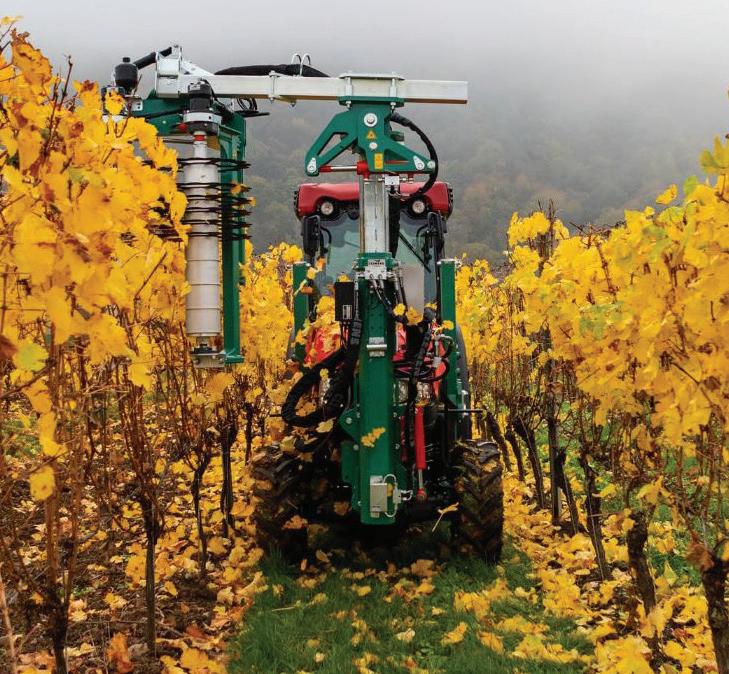
Barber’s pole can come on quickly when there has been a dry spell and then there is a downpour. “The parasite lives longer in damp areas so keep sheep out of swampy grounds, move them to higher ground or into paddocks with a bit of wind,” he adds.
Infected animals need to be drenched immediately, with the correct drench. And if animals are unwell, it’s a good idea to discuss with your vet the possibility of giving them a B12 injection to help them in their recovery.
11 Jacks Road, Renwick 03 577 5508 sales@cmmechanical.co.nz www.cmmechanical.co.nz LABOUR SHORTAGES? WE HAVE THE SOLUTION FOR YOU! CM Mechanical Limited FINANCE OPTIONS AVAILABLE AT ONLY 3.99% T&C’s apply Adaptable Reliable Precise The Clemens pre-pruner provides a less labour intensive option to pruning, with the added bonus of a more cost effective season. News Farming TOP SOUTH MONTHLY June 2023 9
The anointing screen used in the coronation of King Charles III, in the Chapel Royal at St James’s Palace in London. Photo: Supplied.
10 Top Performance Angus Bulls Selling at the Blenheim Bull Sale



13 Top Performance Angus Bulls Selling at the Blenheim Bull Sale
Kiwifruit crop volumes well down


Zespri has confirmed challenging weather events throughout the 2023 growing season have contributed to a lower-than-expected New Zealand kiwifruit crop this season. The latest New Zealand crop estimate indicates that Zespri now expects to export around 136 million trays of Green, SunGold and RubyRed Kiwifruit to more than 50 countries this season.
This is down on last years decreased harvest of 171 million trays and a long way off 2021’s bumper season that reached 182 million trays.
The volume impact, particularly on green kiwifruit, is ex-

Bulk fuel delivery you can depend on


pected to be one of the lowest volumes in the past 20 years, with around 42 million green trays available which is down from around 61 million trays in 2022. It is expected that over half of NZ’s green growers will not make a profit this year. While volumes were down Zespri confirmed that quality was up.

Zespri said that there is currently an was an opportunity for the industry to focus on lifting fruit quality this season and prepare for increased volumes in 2024.
From a supply perspective they were expecting significantly more volume in 2024 as growers rebound from this season’s weather-related reduced yields







and more licenced SunGold Kiwifruit hectares come into maturity.
Growth is expected to continue in the years ahead, with our New Zealand supply alone forecast to reach almost 230 million trays in 2027/28. Northern Hemisphere supply locations are also forecast to more than double from this year’s 25 million trays by 2027/28.
The industry is working hard to build greater resilience into supply chains to overcome the adverse weather events many have faced, deliver larger volumes of consistently high-quality kiwifruit, and return more value to growers and communities.
Rural, farm and commercial customers rely on RD Petroleum’s premium delivery service for bulk fuel supply that is fast, efficient, cost effective and delivered on time, every time. Bulk fuel supply, second to none.
✓ Calving ease ✓ Growth ✓ Fertility ✓ Carcase traits ✓ Temperament ✓ Conformation ✓ Phenotype. Farm visits and inquiries welcome Ph 03 571 6271 Ben & Nadine Maisey 1 1 0 0 TOP PERFORMANCE ANGUS BULLS SELLING AT THE BLENHEIM BULL SALE HOSTED AT LEEFIELD STATION JUNE 21st 2022 ✓ Calving ease ✓ Growth ✓ Fertility ✓ Carcase traits ✓ Temperament ✓ Conformation ✓ Phenotype. Farm visits and inquiries welcome Ph 03 571 6271 Ben & Nadine Maisey Farm visits and inquiries welcome Ph 03 571 6271 Ben & Nadine Maisey
Benson Haywood Territory Manager
Hosted at Leefield Station 20 June 2022 LOT 23, BLACKNIGHT 691
Hosted at Leefield Station - 19th June 10 June 2023 News Farming TOP SOUTH MONTHLY
STAFF REPORTER




MS Ford 157 Haven Road | NELSON | P (03) 548 9189 | msford.co.nz Co2 Emission Rebate for the Mustang Mach-E Base RWD model and PHEV Escape. Subject to the continued availability of rebate funds and eligibility criteria. Applies to first-time registrations from 1 April 2022. To learn more about the Clean Car Programme, please visit http://rightcar.govt.nz/clean-car-discount. T&Cs apply. Eligible for $7,015 Clean Car Rebate* At MS Ford now All-Electric Mustang Mach-E RWD from $79,990 drive away THE ALL-ELECTRIC MUSTANG MACH-E THE HORSE IS NOW ELECTRIC 2023 2023 FORD RANGER XL ONLY 2 AVAILABLE FORD ESCAPE PLUG-IN HYBRID 4WD 2.0L Bi-Turbo D/Cab S A V E N O W FUEL EFFICENT HYBRID LIMITED TIME SPECIAL WAS FROM $62,990+ORC Eligible for $4,025 Clean SPORTY COMPACT FROM $57,990 FROM $36,990 +ORC +ORC SAVE $14,000 PLUG-IN HYBRID MILD HYBRID $5,000 SAVE Advert Farming TOP SOUTH MONTHLY June 2023 11
Nelson scent work
ELOISE MARTYN
Scent work is a challenging activity that allows dogs to use their strongest natural sense of smell in a way that is fun and engaging.
It is an exercise that requires the dog to locate an odour and communicate this to the handler, it also establishes a building of trust between dog and handler. The dog and handler work as a team and negotiate through a variety of environments where dogs are trained to indicate the location a specific odour by pawing, pointing or assuming a specific body position.
While searching, the dog does all the active work while the handler offers only guidance and encouragement. Communication and praise of the dog during the search are greatly encouraged.

Rachel Lowe, an orchardist from Brightwater, has been involved in scent work since March 2021.
“Zeke, my English Springer Spaniel, wasn’t interested in playing when we went out, he just wanted to sniff the ground so when I heard of scent work, I thought it may be something he
would enjoy, we gave it a go and we were both hooked,” says Rachel.
Recently Rachel and dog Zeke took part in the Nelson trial held at the Richmond A&P Showgrounds.
“He blew me away qualifying in all four searches he was entered in,” exclaims Rachel.
The team entered in 1x novice interior, 2x novice exterior and 1x novice vehicle search.
“Zeke got a judges choice award for his exterior search which was awesome, and his other qualifications gained him two titles - novice exterior and novice vehicle,” says Rachel. Novice is the first level of scent work which works on ‘cedar wood atlas’ as the finding odour. Novice interior is a given search area inside a room such as a living room, where the odour has been hidden. The odour cannot be placed higher than 60cm at Novice level.
At the Nelson trial the Waimea Room was used for novice interior. Novice vehicle is where the finding odour has been hidden has been hidden in a vehicle – such as car, Ute, quad bike, trailer or even a ride
Backing the sector across the years


HON DAMIEN O’CONNOR
on lawn mower. The finding odour can again not be hidden higher than 60cm and not deeper than 5cm into the car.

“Wheel arches, grills and running boards on Utes are good hiding spots,” explains Rachel, “Ride on lawn mowers and tractors are a great challenge for the dog with all the environmental smells to distract them from the finding odour.”
The finding odour is an essential oil that is approved by Dogs New Zealand Scent Work. Rachel has process she follows to end up with cigarette filters containing a very small amount of oil residue, which can then be used as the finding odour. Because scent work is still very new to New Zealand, the variety offered is currently limited. However, the slower approach of introduction adopted by Dogs New Zealand is deliberate to ensure that quality and not quantity is established.
“There is enough around to keep everyone, and the dogs interested,” Rachel says, “It’s a pure joy watching your dog do something that is so natural for them and it’s a lot of fun.”
The Minister of Finance has delivered the Budget for 2023 and I wanted to talk about what this Budget delivers for our primary sector – and what has already been delivered by our previous Budgets. This year’s Budget comes at a time where Cyclone Gabrielle has shown how challenged rural New Zealand can be in a changing climate. Severe weather in Marlborough, Tasman and the West Coast in recent years has focussed us all on longterm thinking and resilience. Budget23 is focussed on the core infrastructure needs of rural New Zealand with a forward looking $6 billion fund for a National Resilience plan to focus on building back better from recent weather events. It will also include future-proofing road, rail, and local infrastructure wiped out by the extreme weather, as well as telecommunications and electricity transmission infrastructure.
In addition, the Government in May signed contracts to deliver 5G mobile services to 55 rural towns. The Rural Connectivity Group recently delivered the 400th new cell phone tower. These are great steps to keep rural people connected and school kids engaged; create access to health services; and get production data flowing as new technology comes to hand. We’ve continued to focus on the recovery of a rural economy battered by Cyclone Gabrielle with over $180 million to help farmers and growers to re-establish their businesses. The $100 million on flood protection and $450 million investment in roading and rail will also provide certainty for these affected regions. Decisions on the recovery traverse complex issues and we’re committed to working as quickly as we can to help affected communities and businesses.
In the biosecurity space, Budget 2023 sees establishment funding of $42 million for a new state of the art Plant Health and Environment Laboratory in Auckland to help our multibillion-dollar plant-based sectors grow. This new facility is a vital piece of infrastructure to safely import new plant varieties and species that are essential for ongoing growth and adaptability in our horticulture, arable and
forestry sectors. I will be focussed on ensuring this 10-year project is appropriately funded to succeed. Furthermore, we’re on track to eradicate Mycoplasma bovis, now being five years into a 10-year plan that we committed nearly $900 million to in 2018. We were down to zero properties at the start of May and have since detected a new property in mid-Canterbury. We can expect this to happen over the coming years as surveillance moves us closer to eradication. I would also note that Budget 2022’s $1 billion package for the food and fibre sector continues to flow through the sector for the next three years. Last year we established the Centre for Climate Action on Agricultural Emissions as part of a $338 million investment in reducing agricultural emissions. As part of that vital work, we’ve secured $170 million in 50:50 joint venture funding with business over the next four years to get new emissions reduction tools into the hands of farmers. In addition, our Sustainable Food and Fibre Futures Fund has now seen $555 million co-invested with business across 255 innovative projects.
Our strategy to position our food and fibre sector for future export growth dovetails with our trade agenda and is reflected in our investment decisions through consecutive Budgets.
Since 2017 we’ve worked hard to negotiate new free trade agreements (FTAs) and open access for food and fibre exporters. We’ve secured or upgraded seven FTAs in five years. Our sector has hit record food and fibre export revenue in the past two consecutive years and in 2023 we’re forecast to hit a new record of over $55 billion. The Government is also maintaining our commitment to work with the sector through He Waka Eke Noa to reduce agricultural emissions so we can capture market advantage abroad, where signals continue to strengthen.
In New Zealand we’re fortunate to have a passionate, diverse and world-leading food and fibre sector, where ideas get shared, contested, adopted and innovated. My commitment is to continue to work with you to identify opportunities to grow value and tackle challenges together as we aspire to be the best farmers and growers for the world.
12 June 2023 News Farming TOP SOUTH MONTHLY
Rachel Lowe and dog Mika competing at the recent Scent Work trial.
Photo: Martin Armstrong.
Trees and peonies in Tasman
ELOISE MARTYN
Planting trees and peonies on 15 hectares in Foxhill is how Christeen Mackenzie, Tasman District Council’s Moutere/ Waimea Ward Councillor, likes to spend her time when not working.
“We were fortunate a few years back to be successful and get into the one billion trees programme,”
Christeen explains.
“From this we planted four hectares into manuka and another hectare into mixed natives.”
Planting some of the property into trees made sense to the Mackenzie family for a number of reasons and meant they still had a decent amount of land to run a few cattle, pigs and hens as well as produce hay each season.
Recently the family diversified and planted seven thousand peony tubers.
“My son had been keen on growing some type of flowers and this opportunity came up,” says Christeen, “It was tricky to get the tubers in the ground
last year, it was just so wet.”
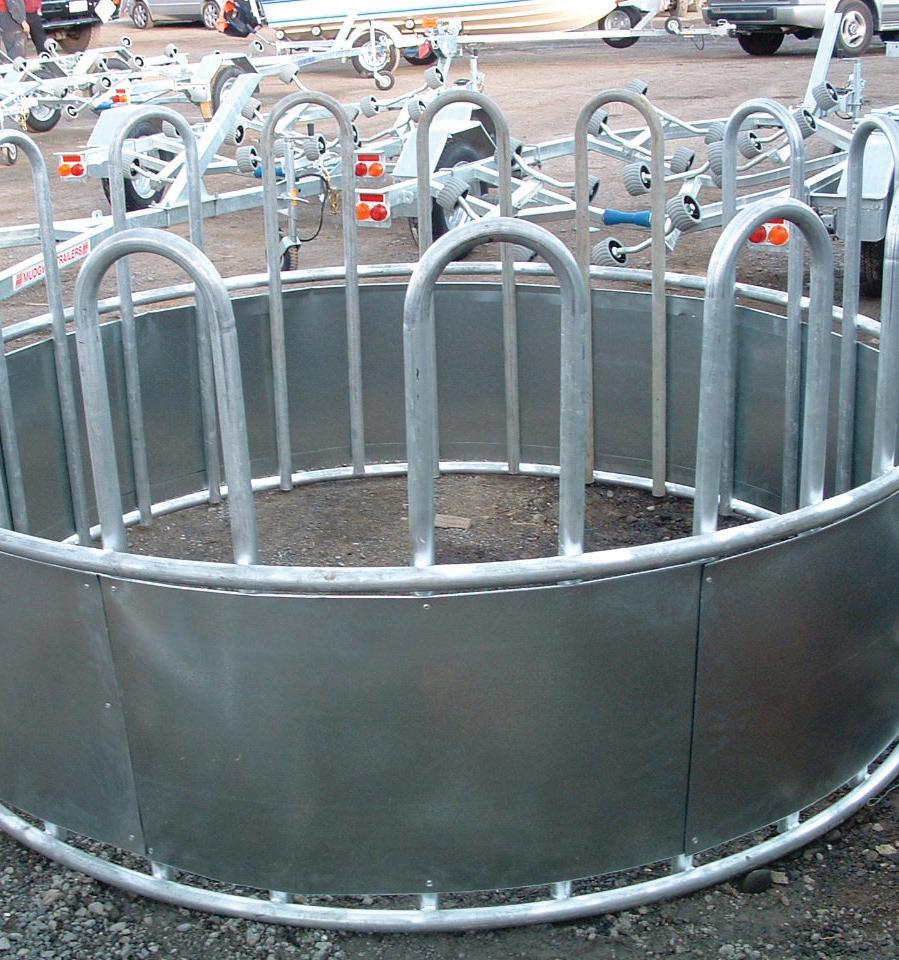
The peony adventure is in conjunction with an experienced South Canterbury grower who is aiming to diversify his growing season by having the sought after flowers grown in different climate zones. “It takes around four years before the flowers will be producing at a commercial level, in the meantime it’s all mowing and spraying,” says Christeen. Christeen’s love for the environment is reflected in her past roles, such as a 25-year career with DOC and an active trustee on both the Tasman Environmental Trust and the Wakefield and Districts Health Trust.
“To be an accountant and work for an organisation like DOC was a dream job,” Christeen says.
“When I moved back to the Tasman region, it was suggested to me that having someone with my chartered accountant skills and an understanding of the interface between local government and central government could be a benefit to

the district. I thought about that and put my hat in the ring and got elected.”

“I always ask questions of council staff and managers regarding the raft of legislative changes – how are we communicating this to our rural sector? How are we playing a role of helping?” says Christeen.
“The primary production sector is hugely important, and we’ve had a large amount of change impacting this sector, whether its regulatory change, climate change, adverse events or change in our overseas markets, these changes are very challenging for all involved.”
A recent example of how council is engaging with the rural sector was the Rural Conversation events held in various parts of the Top of the South.

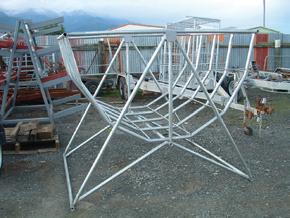
“They were well attended, and all involved did a good job. We are keen to hear from farmers and growers and this is a great way to connect.”

Last year saw Christeen re-elected for a second term.
“I know more than I did in my first term, the council have invested in me so it’s good to have the opportunity to optimise that investment by serving a second term.”

CUSTOMISED FEED SOLUTIONS JUSTINE ELDER YOUR WEST COAST REGIONAL FEED PARTNER MOLASSES | BLENDS 027 255 3614 | justine.elder@graincorp.co.nz est.1979 66 Beach Road ,Kaikoura Bale Feeders and Trailers Custom, high-quality, NZ-made products from a small family business Ph: (03) 319 5481 dunlea@dunlea.co.nz w.wwmudgway.co.nz News Farming TOP SOUTH MONTHLY June 2023 13
Christeen Mackenzie
OPINION:


The battle for hearts, minds and reality

GARRICK BATTEN

Farmers have failed not only themselves to establish their critical role in the environment, food supply and the economy. Now politicians and public can continue to challenge, penalise and even attack them.

The air-shipment of live goats to China was a recent example of both the need and the reason for farmers taking and maintaining the high ground of Agriculture’s role and significance. National media gave that shipment prominence for more than a day, reflecting the opinion of a minor animal welfare lobby group. They had already ended sea-freight of breeding livestock based on an unrelated shipwreck and destroyed an important and integral part of our farming system with acquiescent political support. Now their ignorant appraisal of Chinese farming systems was the reason for their cause, and the media loved it.

If farmers had been active and influential enough to lead that item, they would have noted how an in-country supply of goat milk would help improve

diets of children, especially infants and those allergic to cow’s milk. They would have noted China wanting our stock because our farmers maintain a very high biosecurity and animal health status so we can export animals to the world, unlike many others. Media could have noted how Auckland University researchers had identified and established the gene for high milk production, and how our dairy goat farmers have developed and bred the superior dairy goats sought by China. Media could have even widened the story to include export of our sheep breeds, especially rams to South America, or superior Angus genetics highly valued in China, and kiko goats developed here and are now the second-ranked meat goat breed in North America. Or New Zealand white rabbits in Asia. All with a continuing history over many years. The media could have recognised that instead of a minor lobby group’s introspection.

Ironically, they repeat stories about how other people think farmers should run their busi-
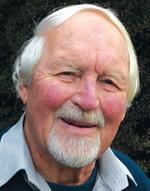

nesses. These come from academics, consultants, various professional groups, environmentalists, economists, lobby groups, politicians - the list goes on. But where are stories telling builders how to run their businesses, or dentists, retailers, manufacturers or motels?
Various media tell the public what it perceives they want to hear. A current emphasis is on artificial meat and milk products. To influence that, farmers now need leadership, focus, work and commitment, and investment by all farm businesses. The push for compulsory worker unionism for such solidarity should not have escaped their notice. The solution for farmers is in their own hands and they must “control the narrative” to use the current jargon. One platform is uniting and speaking with one voice on issues that are important to not only them but the whole country. This is not impossible. There are models for individual sectors to develop and pursue their agendas and interests within a universal framework.

www.thetoolshed.co.nz 0800 948 665 NATIONWIDE AND ONLINE 29 STORES Sign up as a GoodMate to receive Exclusive Discounts, ToolShed News, Demo Day Invites and Special Offers! T&Cs Apply. Offer Ends 30 June 2023 or while stocks last. Receive a ToolShed Light Up Beanie with purchases made online or in store at The ToolShed during the month of June 2023. VALUED AT $ 24.90! FREE GIFTPURCHASE!* WITH TOP SOUTH FARMING READER OFFER 3x LIGHT SETTINGS! ENTER THE CODE BELOW AT THE CHECKOUT TSFBEANIE CLAIM ONLINE MENTION TOP SOUTH FARMING TO THE TOOLSHED TEAM IN STORE CLAIM IN STORE From kitset sheds to the complete build • Vineyard and Hopp Development • Stock Yards • Farm Fencing • Waterway Protection Development • Farm Tracks and Fenceline Development We specialise in the Rural & Lifestyle Sector within the Nelson Tasman region Over 30 years experience Farmline FARM BUILDING & FENCING Farmline40@gmail.com | 027 963 5396 14 June 2023 News Farming TOP SOUTH MONTHLY
Sam Vineyard/Orchard Spreaders


Strong. Simple. Smart.
Spread from the back. Band pile from the front. No change-over time.
NZProudly Made

GAME CHANGER
Rates and row widths are simply keyed in - then you are away! From lime to gypsum & even mulch. Simple, accurate & very very versatile.

Your local Landquip stockets. Made in NZ for NZ vineyards.
SWEEPS
Orchard, vineyard pruning sweeps. Double and single row options, heavy-duty rubber flaps or nylon brush heads.

MOWERS
Orchard, vineyard, and topping mowers. Front and rear mounted, side or rear discharge, wheel kits, and chain guard options.

ROLLERS
Water ballast rollers, slimline steel frame, tight turning radius, hydraulic rear wheel kit option.

IN STOCK NOW IN STOCK NOW Terms and conditions apply. Power Farming Marlborough Bryan Simpson Parts 027 362 1429 Dave Jeffery Sales 027 291 9576 Russell McGhie Service 027 365 1617 Blenheim 3535 SH 1, Riverlands 03 573 7089 Advert Farming TOP SOUTH MONTHLY June 2023 15
Balancing common sense and legal process under the RMA

ANNA BENSEMANN
When it comes to district planning, the fixed nature of rules often raises questions about their practicality.
While it may seem unreasonable for a resource consent to be required for minor breaches, it is essential to consider the broader implications of such leniency. It is important to strike a balance between common sense and legal processes under the Resource Management Act (RMA), emphasizing the need to protect communities and environment. The fixed nature of rules ensures consistency and predictability in decision-making processes. These rules exist to protect the environment, promote sustainable development, and safeguard community well-being. By set-
ting clear standards, they prevent the accumulation of harmful pollutants and maintain the integrity of our ecosystems. While it may be tempting to apply common sense to every situation, it is crucial to consider the potential consequences of deviating from established rules. Take, for instance, the example of an air discharge burning coal. If we allowed even a slight increase in pollution beyond the specified limits, the long-term impact on air quality could lead to severe health issues for the surrounding community. Similarly, a minor breach in wastewater discharge could result in foul odours and a compromised quality of life for residents.
By enforcing strict standards for various resource consent types, the legislation aims to prevent

the gradual degradation of our environment and mitigate potential harm to human well-being. While some breaches may seem insignificant on their own, their cumulative effect can be detrimental. Adhering to the legal process helps maintain a healthy living environment for present and future generations. Deviation from fixed rules, even in seemingly minor cases, can create a slippery slope where exceptions become the norm. This erodes the integrity of the resource management framework, leaving room for exploitation and unchecked environmental harm. By adhering to established rules, we maintain a level playing field and ensure that everyone operates within the same framework of expectations. The legal process not only en-
sures adherence to rules but also promotes accountability and transparency. Through public consultations, hearings, and submissions, communities have a platform to express their concerns and influence decision-making. The legal process encourages a robust exchange of ideas, fostering trust and collaboration between decision-makers and stakeholders. While fixed rules under the District Plan are essential, there is room for flexibility and common sense in certain circumstances. It is crucial to differentiate between minor breaches that may have negligible impacts and those that pose significant risks to the environment and public health. The resource consents process allows an assessment of each situation to consider the potential conse-
Book Review
quences, allowing for a balanced approach, upholding the well-being of communities.
Balancing common sense and legal processes under the RMA is a delicate task, but one that ensures the protection of our communities and the environment. While flexibility may be warranted in some cases, the fixed nature of rules is crucial for maintaining environmental integrity and safeguarding public health. Striking a balance between common sense and legal processes enables us to navigate the complexities of resource management effectively, ensuring a sustainable and prosperous future for all.
Anna Bensemann, Senior Planner, Baseline Group Marlborough Ph 03 578 7299, Email anna@blg.nz


The first impression is mountaineering is not for the faint-hearted! But author David Bass loved the challenge and the daring demanded. He became one of New Zealand’s leading mountaineers, first beginning climbing, caving and white-water rafting. Then as a seasoned and highly skilled mountaineer he and family moved to Wanaka.
Fiordland’s Darran mountains beckoned and he became fascinated by the challenges they threw out. Eight years ago in 2015, while escaping from a storm in the dark of night, he fell, ending up with a broken neck and other severe injuries.

He was rescued, survived and recuperated although now in a wheelchair. This book engagingly covers his mountaineering development, his accomplishments and then the terrifying accident and then the aftermath of his amazing adaption. Although written in the present tense, something I’m not always comfortable with, the book was absorbing and a memorable read. Highly recommended.

P. 03 578 7299 anna@blg.nz www.blg.nz MARLBOROUGH PLANNING | SURVEYING | ENGINEERING
and the team are land development experts and can help with all your resource consent needs around the farm. Get in touch about your next project, and with their experience and expert knowledge they’ll save you time and unnecessary cost in preparing your resource consent, giving it the best chance of being approved without delays SUBDIVISIONS AND BOUNDARY ADJUSTMENTS WATER PERMITS SEPTIC TANK DISCHARGES EARTHWORKS CONSENTS 16 June 2023 News Farming TOP SOUTH MONTHLY
Anna
TONY ORMAN
“Not Set in Stone” by David Bass, Potton and Burton. $39.99
EXCLUSIVE
Tasman Report
DOVEDALE
Appealing Dovedale Farm
Located in the desirable Win Valley and a real grass factory this 70ha (172 acres) property will appeal to astute buyers.

A meandering driveway leads to a stunning threebedroom, two-bathroom Adobe Brick homestead on an elevated site with ample garaging and storage. A designer kitchen and open-plan living are just some of the features of this impressive home. There is a full range of farm buildings and being well-tracked provides easy access to all areas of the farm. A very productive farm, ideal for dairy grazing, cattle finishing, or any class of livestock.
Inspection will not disappoint.
pggwre.co.nz/NEL36422
NEW LISTING

3 2 3
PRICE BY NEGOTIATION
Plus GST (if any)
VIEW By Appointment Only
Joe Blakiston
M 027 434 4069
E jblakiston@pggwrightson.co.nz
Doug Smith
M 027 543 2280
E douglasjcsmith@pggwrightson.co.nz
It must be the change of seasons, but I am struggling to come up with a hard-hitting topic to write about this month, so does that mean that all is well in the Rural world...? I know it’s not but we will get to that - Firstly I would like to welcome Steve Crockett to the PGG Wrightson Real Estate team - Steve has spent a career in leadership roles in several rural Marlborough Schools and is now embarking on a career in Real Estate with us where he will most likely be selling property for parents whose children he has taught and probably for some of the children he has taught as well. This makes you think about how you are viewed in the Rural circles and how in many ways our Rural communities give back to those who have invested in them from contributions of time, sponsorships volunteering and generally being part of a wider community.
fed Supplies are such a part of the glue that makes up the heart of Rural Communities.
In recent weeks we have all watched Country Calendar and I’m surprised at how many episodes we see the low-key involvement of PGG Wrightson staff in the day-to-day business of farming and horticulture in New Zealand. It is also obvious that the Nelson and Marlborough area is a hotbed for Country Calendar episodes where our beautiful region gets showcased.
Joe Blakiston 0274 344 069



I know from many years of being involved in refereeing rugby, or my long association with boating and cycling in the region how easy that has been to have conversations and get around the table with clients and be able to also assist them with their Real Estate needs when the time arises. Our interests and connections are what makes us part of the community, and this is why a diverse company like PGG Wrightson and Fruit-

SOLD
So, with all the negative headlines and doom merchants out there we should all appreciate each day and not take for granted that we are able to enjoy each other’s company, or even choose to have time to yourself to take in the great things around us. That might be the antidote for all the avalanche of “bad stuff’ that we are constantly reminded of online or through the media that we can’t personally do anything about.
If all else fails turn your mobile phone and TV off, head out to appreciate the great Tasman outdoors around us. And if you are wanting to make a decision on a land sale opportunity talk to any of our PGGW Real estate team who are part of your community and would welcome your call
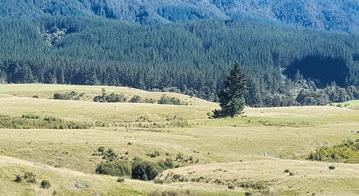
Have a great month.
TAPAWERA
Tadmor Grazing Block
This 52-hectare bareland grazing block is a great first farm opportunity or a handy runoff for an existing farmer. The contour is easy to medium hill country with permanent fencing. Farm improvements include a two-stand woolshed, 7-bay implement shed with a workshop and stockyards. With easy contour and good road access, it would be an ideal block for a forestry investment.
pggwre.co.nz/NEL37656
SOLD
RIVERLANDS
South Marlborough Hill Block



A substantial hill block in Fifteen Valley will suit buyers looking for a beef or sheep grazing property, just minutes from Blenheim. Located behind the Cloudy Bay business park, this recently subdivided block of 192 hectares (475 acres) is an opportunity for graziers to extend their land holdings, land bank, or have a rural retreat close to Blenheim. Presently running a breeding cow herd with progeny sold at local sales.


DEADLINE PRIVATE TREATY Plus
GST (if any)
(Unless Sold Prior)
Closes 12.00pm, Friday 23 June
VIEW By Appointment Only
TADMOR 1584 Tadmor-Glenhope Road
Tadmor Valley Lifestyle..
Doug Smith
M 027 543 2280
E douglasjcsmith@pggwrightson.co.nz
Joe Blakiston
M 027 434 4069
E jblakiston@pggwrightson.co.nz
pggwre.co.nz/BLE37878
Entry-level lifestyle block in the beautiful Tadmor Valley. If you have been dreaming of that rural lifestyle but prices just keep getting away from you well here is your opportunity. Set on 2.5885 hectares of flat land, the two bedroom home is set well back off the road, has great 360 degree views and gets all-day sun.

pggwre.co.nz/NEL37514
Doug Smith
M 027 543 2280
E douglasjcsmith@pggwrightson.co.nz

PGG Wrightson Real Estate Limited, licensed under REAA 2008 Helping grow the country
RURAL | LIFESTYLE | RESIDENTIAL
Advert Farming TOP SOUTH MONTHLY June 2023 17
Real debate not theatrical displays
STUART SMITH Kaikoura MP
The behaviour displayed by Te Pati Maori in Parliament recently was highly inappropriate and disrespectful. Rawiri Waititi and Debbie Ngarewa-Packer seem more interested in theatrical displays than engaging in debate on the issues that matter to New Zealanders.
Despite proclaiming their strong commitment to upholding Tikanga, they demonstrated a disregard for the traditions or the Tikanga of parliament. It’s no surprise that Christopher Luxon ruled out working with the Te Pati Māori. Frankly, it would be impossible

to work with them, without conceding to divisive and dangerous policies.
Right now, it’s crucial for politicians to focus on getting New Zealand back on track. Our infrastructure is failing, two-thirds of our students are not able to pass a basic literacy and numeracy test, and truancy levels are alarming. Despite the government’s record tax receipts, our services are buckling under pressure, and taxpayers are struggling with the cost-of-living crisis.
The Government is attempting to blame international factors, yet our economic problems are very much homemade and due to wasteful Government spending. While superannuation and

benefits are adjusted annually for inflation, tax brackets are not. As a result, the phenomenon known as “bracket creep” or “fiscal drag” has contributed to an additional tax burden of $17,500 per household over the past five years. National will inflation-adjust tax brackets. With such a significant increase in real taxes, we should expect an increase in the delivery of public services, but the opposite is happening. We hear horror stories of long wait times in emergency departments and surgical procedures, educational achievement is declining, and crime rates are rising.
National believes that quality spending is more important than

the amount spent. We will not waste money restructuring the health sector to prioritize ethnicity over need. We will not spend billions giving ratepayer-funded water infrastructure to co-governed entities where appointed iwi have veto rights on all decisions. Nor will we allow a small group to control all water use by issuing Te Mana O Te Wai statements. We will require Treasury to outline the effectiveness of spending in key areas – like health, education, and social development. We will require IRD to produce a “taxpayers’ receipt”, which every taxpayer will receive when their tax returns are finalised. It will break down how much money
they’ve paid in taxes and what transfers they have received in the last year – including any Working for Families and other benefit payments. It will also break down where their taxes were spent, including on education, health, and welfare payments.
We will bring back performance pay for Chief Executives and Deputy Secretaries who will have their pay determined in part by their performance.
We can either help those in need through more social welfare assistance or inflation-adjusted tax brackets.

We believe that taxpayers should keep more of their own money as they will spend it more wisely than any government can.
Volunteering makes a difference in both town and country

MAUREEN PUGH
National List MP
New Zealand has an amazing tradition of volunteering. Communities everywhere are so fortunate that people simply see need and swing into action. In the recent tragic overnight fire in Wellington, the early morning light brought donated food to the cor-

don line from people living nearby. People just wanted to help.
The staff at Government House could see the tragedy unfold in the night sky. They thought quickly and stayed on past their shifts to deliver hot food to the first responders as the next day broke.
Then the emergency centre was set up at a nearby park to give
food and shelter to those who had been rescued from the horror of fire taking hold of a four-storey, 90-odd room hostel. Volunteers were there within hours to help with welcome food, clothing and bedding for the displaced, emotionally drained and upset tenants of the burnt-out building. This country has a high volunteering participation rate: a Department of Internal Affairs report from June last year showed that an amazing 49.8% of the population volunteers in their community and the economic value of volunteering is estimated at $4billion per year. I think that’s a con-
servative figure really because its nigh on impossible to place a dollar value on a volunteer saving someone from harming themselves and you just can’t place a value on what a chat with an elderly or lonely person on their own is really worth?
Volunteer Week during June is a great opportunity for both urban and rural people to reflect on just how lucky we are to have thousands of people who are prepared to give of their time and talents to help others, whether in an emergency situation, or in terms of on-going support for covering disabilities or infirmity or even times of temporary need. But the voluntary and community sector landscape is undergoing change. Upset caused by Covid disruption and uncertainty, and an ageing population are factors in this change. Some wonderful volunteers in many worthy organisations have taken the opportunity that Covid shutdowns gave to retire from doing community work.
Couple that with older people
being concerned about infectious diseases and there’s now a shrinking and ageing volunteer ‘workforce’. While younger volunteers had stepped up during the Covid-19 response during 2020 and 2021, the added pressure of Covid and severe weather events mean a shortage of people who can help out where there is need. I cannot write about the community and voluntary sector without a ‘shout-out’ to the Rural Support Trust and the marvellous and essential part they play in getting rural folk through the huge challenges they face. Rural Support Trust is on 0800 787 254 offering free and confidential support from rural people who recognise, through experience, that pressures can mount up. Although I hesitate to single out one particular group supporting people in our primary industries, I can’t speak highly enough about this organisation and I hold their volunteers, going about their support roles in anonymity and complete confidence, in very high regard.
A satisfied customer in Hamilton has been using Septi-Cure™ for over five years.




He says this allows them to have an odour free septic tank with low maintenance costs. He also says that his service person is amazed at how well Septi-Cure™ works, keeping their tank in very good condition.



*Results may vary

Breakthrough Product Developed for your Septic Tank 0800 109 202 www.ecoworld.co.nz Also Available at: ATTENTION SEPTIC TANK OWNERS Before* After* Septi-CureTM is: Cost Effective Easy To use Improves Soakage Reduces Solids and Scums
Eliminates Nasty Odours
Reduces Costly Pump-outs
Like us on Facebook 18 June 2023 News Farming TOP SOUTH MONTHLY
Escape the Everyday
99 Redwood Park Rd, Redwood Valley
This is a truly unique property that offers the ultimate lifestyle of luxury, tranquillity, and convenience. This stunning home sits proud on an elevated site enjoying stunning sea views. The land has been extremely well developed and improved over the years, with rolling to some steeper grazing land spanning approximately 20 Ha. Exceptional farm sheds, cattle yards and reliable water tick the boxes. Warm, ambient and light, the spacious living and dining areas flow seamlessly onto a large outdoor entertainment area, perfect for those warm Tasman evening barbeques. The home has been thoughtfully designed and can very easily be split into two fully separated living spaces with individual entrances, so for extended family, friends or potentially Air B&B or some rental income on the cards. Don’t miss your chance to secure this exceptional property in one of Tasman’s most desirable locations. This block has something to offer to everyone, give me a call today.
For Sale
Licensed Agent REAA 2008
Toby Randall M 027 233 9170 toby.randall@harcourts.co.nz
Home, land and lifestyle, all in one!
61 Bartlett Rd, Hope
Representing the perfect blend of contemporary comfort and ultimate lifestyle appeal. This property is a spacious 4/5 bedroom family home framed by stunning trees and gardens, nestled within an orchard, located in the heart of Tasman, perched upon an acre and a quarter block.


Outside boasts something for everyone, with plenty of lawn and paddocks for the kids and animals to run around on, as well as entertaining areas where the adults can relax and unwind.
The semi-rural setting is superb, allowing you to enjoy the very best of both worlds - the fresh air and privacy, and everything from the local schools to an array of quality amenities all within easy reach.

Price By Negotiation Over $1,560,000
Licensed Agent REAA 2008
Toby Randall M 027 233 9170 toby.randall@harcourts.co.nz







Ramshead Station - Marlborough 1180 Tyntesfield Rd, Waihopai Valley
Our vendor has decided it’s time to allow a new owner the privilege of owning this vast piece of New Zealand high-country.

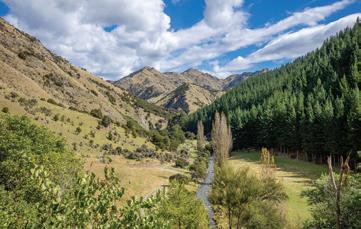
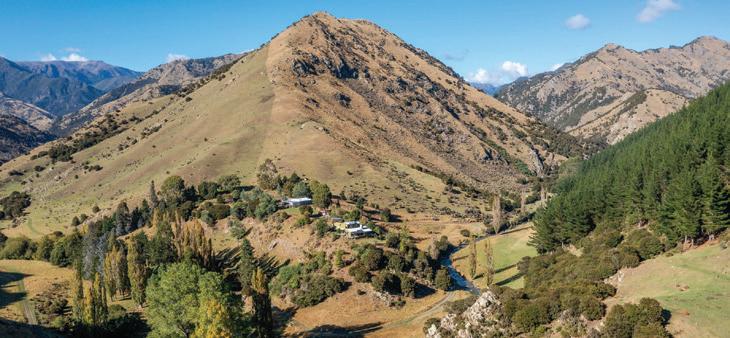
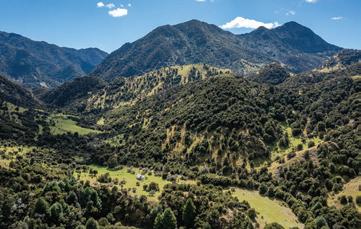
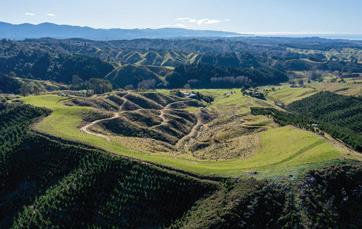

Of the 2346 Ha of land, approximately 892 Ha is effective with contours being rolling to steeper land, currently utilised for grazing sheep and cattle. The balance of the land is made up of either planted forestry, and or established natives. Two main water ways run through or alongside the property with the Omaka River running along its eastern boundary and the Dillon running through the property, to the iconic Dillon hut. Also located on the property is the 4 bedroom 2 bathroom residence that enjoys great sun shine and stunning views down the valley, as well as stock handling facilities and farm shedding. The location gets the tick being located just outside of Marlborough wine country and a short drive from the airport or Blenheim township itself. Don’t miss your chance to experience and own the ultimate New Zealand high country block.
Toby Randall
M 027 233 9170
toby.randall@harcourts.co.nz
Licensed Agent REAA 2008
Growing up on a dairy farm made it a natural choice for Jodine to Study Agribusiness and Equine at Massey University. Following the more hands-on approach of farm management, Jodine embarked on a career as a bank manager in both Rural and Business banking . This has set her up to be both professional and practical in her approach to selling lifestyle properties. Jodine has always had a passion in real estate having owned rentals, completed multiple renovations for on-sale, and built spec homes; resulting in a good understanding of the process and emotions involved in buying and selling property.


Call or email Jodine today! 021 944 337 jodine.twose@harcourts.co.nz

Platinum Blue Limited Licensed Agent REAA 2008 Jodine Twose LIFESTYLE SALES CONSULTANT INTRODUCING Meet the entire Rural and LifestyleTeam Sharyn Miller |
|
Rooney Advert Farming TOP SOUTH MONTHLY June 2023 19
Jodine Twose
Toby Randall | Krystal
Some lessons from Cyclone Gabrielle
DARREN CRAWFORD
Many of the Nelson Marlborough fire district team were deployed to assist in Hawkes Bay following Cyclone Gabrielle.

My role was to lead a multi-disciplinary team consisting of, doctors, nurses, mental health specialists, Ministry of Primary Industries, Ministry of Social
Development as well as engineers and drone pilots. The task was to fly by helicopter into isolated communities, assess needs and deliver acute services and assistance as required.
The first realisation was just how desperate the situation was, communities were supporting each other well, but were tired, scared - many had suffered significant loss and some were exposed to very traumatic scenes.
The uncertainty was obvious, and all these stressors can easily create an environment for tensions to rise.
Communities that were already well connected, tended to become organised quickly, they set up community hubs and used their existing networks to reach out to the wider community with information and support. Food drops were shared to the community evenly and mostly, those that needed support were brought forward. Of interest was the rural/ farming sector – farmers
and people who live remotely on the land tend to pride themselves on being self-sufficient and resourceful, although this is true, when your chook house, vegetable garden, stock have vanished or are inaccessible and your power is out – things change fast. A challenge that became evident was the increased risk profile of impacted communities –straight away people are forced to look at water supply, heating, cooking and septic functions differently, when your septic and water tanks have gone or full of silt and contamination, power
is out, candles and gas cookers/ BBQ’s are being used inside (the list goes on) the risk profile increases.
We found ourselves recommending actions to mitigate this new risk profile and steering people away from risky activities – the last thing an isolated and impacted community needs is another tragedy, such as a house fire, farm accident or sickness.
My recommendation is that communities pre-think these events, plan together and develop locally led initiatives to build stronger community resilience
Tips for building community resilience
• Aim for self-sufficiency
• Assess critical needs
• Create strong networks and communication channels
• Consider how you can support those who may need more help
• Identify hazards and potential hazards
• Develop an animal/pet welfare plan www.mpi.govt.nz/animals/animal-welfare
• Make a household plan and have a grab bag: getready.govt.nz
• Keep up-to-date on information with the Antenno app
• Find out what groups are already available: neighbourhoodsupport.nz
danielle@topsouthmedia.co.nz

Caltex Wakefield
Farmlands Richmond
Farmlands Motueka
PGG Wrightson Murchison
Brightwater NPD
BMTT
Tractor Repairs & Spares Richmond
Harcourts Richmond
Bayleys Wakefield
Tasman Honda
MS Ford
Top South Media
Farmlands Hokitika
Farmlands Greymouth
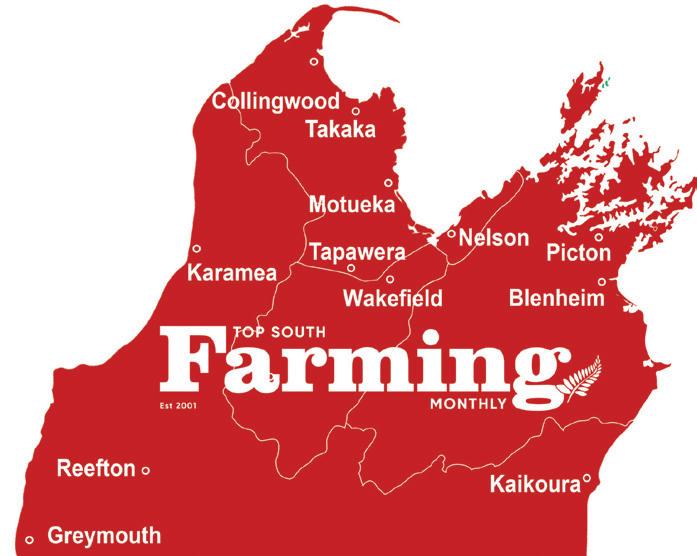
Tasman AG Ikamatua
Farmlands Westport
Karamea Visitor’s Centre
PGG Greymouth
Buller Vets
Farmlands Blenheim
Seddon Supermarket
Renwick Supervalue
Tractor Repairs & Spares Renwick
Farmlands Kaikoura
PGG Kaikoura
Rai Valley Brick Oven
4 Square Havelock
TSM Marlborough
Nelson: 78 Selwyn Place Ph: +64 3 548 8349 Richmond: 66 Oxford Street Ph: +64 3 543 9090 www.pittandmoore.co.nz Legal protection for your farm through the stages of life Make a plan to protect your farming and rural assets now and in the future. Inheritance/estate planning and wills Protecting assets Enduring powers of attorney Succession planning AVERAGE READERSHIP 34,800 Farming TOP SOUTH MONTHLY Delivered to all rural homes from Greymouth to Golden Bay and Kaikōura to Marlborough Sounds. We’ve got you covered. CIRCULATION
Danielle Brown 0221605094
14,500
WEST COAST
TASMAN MARLBOROUGH FIND YOUR FREE COPY Contact Danielle for all your advertising enquiries 20 June 2023 News Farming TOP SOUTH MONTHLY
Snr Advisor, community readiness and recovery FENZ
Bringing more young people into farming and giving them the opportunity to learn on the job is the key to a good future for the sheep and beef industry, says Tasman District farmer Peter Moore.
Peter and Cathy Moore farm 460 hectares at Upper Moutere, running 4000 sheep, a ram breeding operation and 200 head of beef cattle and are big supporters of on-farm training.
Farm shepherd Cameron King is in his third year of training with Primary ITO | Te Pūkenga to complete the New Zealand Certificate in Agriculture Breeding Livestock Farming Level 4.
“We need more younger people in sheep and beef farming. They try new things and bring improvements to the farming operation,” says Peter.
On-farm training positive for sheep and beef farming
The Primary ITO programme works in well with farm work and he likes that the Training Adviser supports both the learner and the employer.
Cameron is supported by experienced Primary ITO training adviser Kirstie Dodds, a former teacher and artificial insemination technician.
“I enjoy working with the learners and employers. It is really rewarding to see the learners progress, the knowledge they gain and the impact they have on the farming business,” says Kirstie.
Peter says the training has given Cameron the opportunity to apply his interest in technology
On-farm learning for next generation of dairy farmers

Continuous learning enables team members to develop and provides added support to the business, says Kevin. “We are investing in people so there is a future not only for our business but in the industry.”
A former Primary ITO learner himself, Kevin says learning with Primary ITO helps his team to understand the background to the tasks they are doing.
to the business. He has mapped the farm, noting the history of each paddock, and is using genetics applications to record stud ram information.
The programme has also moved the business focus toward goal setting for lamb weights and longer-term pasture planning.

Peter says he highly recommends other sheep and beef farmers consider giving their employees the opportunity to gain a Primary ITO qualification and that training adviser support makes it achievable for employers.
Bringing the next generation of dairy farmers through by offering them on-the-job learning is important for the future of the industry, says Tasman district Dairy farmer Kevin Freeman.

Kevin and his wife Kyla milk 390 cows at Atapo farm and have a farm assistant, Gemma Balmer, undertaking the New Zealand Apprenticeship in Agriculture Dairy Farming with Primary ITO | Te Pūkenga.
Senior Farm Assistant Jack Hicks and Gemma Balmer are completing the Level 3 qualification, and Jack plans to start Level 4 in future.
He says through their learning his team are able to help solve problems on farm and offer ideas toward business decisions with Jack progressing from dairy assistant to second in charge.
Training Adviser key to success
Kevin says the learners are well supported by their Primary ITO Training Adviser Kirstie Dodds, class tutors and the online platform, Mahi Tahi, which is easy for both learners and employers to use.
A former teacher and artificial insemination technician, Kirstie enjoys working with learners and employers. “It is really rewarding to see
learners progress, the knowledge they gain and the impact this has on the farming business.”
Primary ITO training advisers are in regular contact with learners to support their progress and meet with employers and learners at least four times a year to set a training plan.
Learners attend classes once every month to six weeks and attend study days and nights. A learning support team and mentors are available to learners who require additional support.

Interested in on-the-job learning? Contact Kirstie Dodds on 027 232 7838 or kirstie.dodds@primaryito.ac.nz Advert Farming TOP SOUTH MONTHLY June 2023 21
Game Bird Opening Weekend 2023
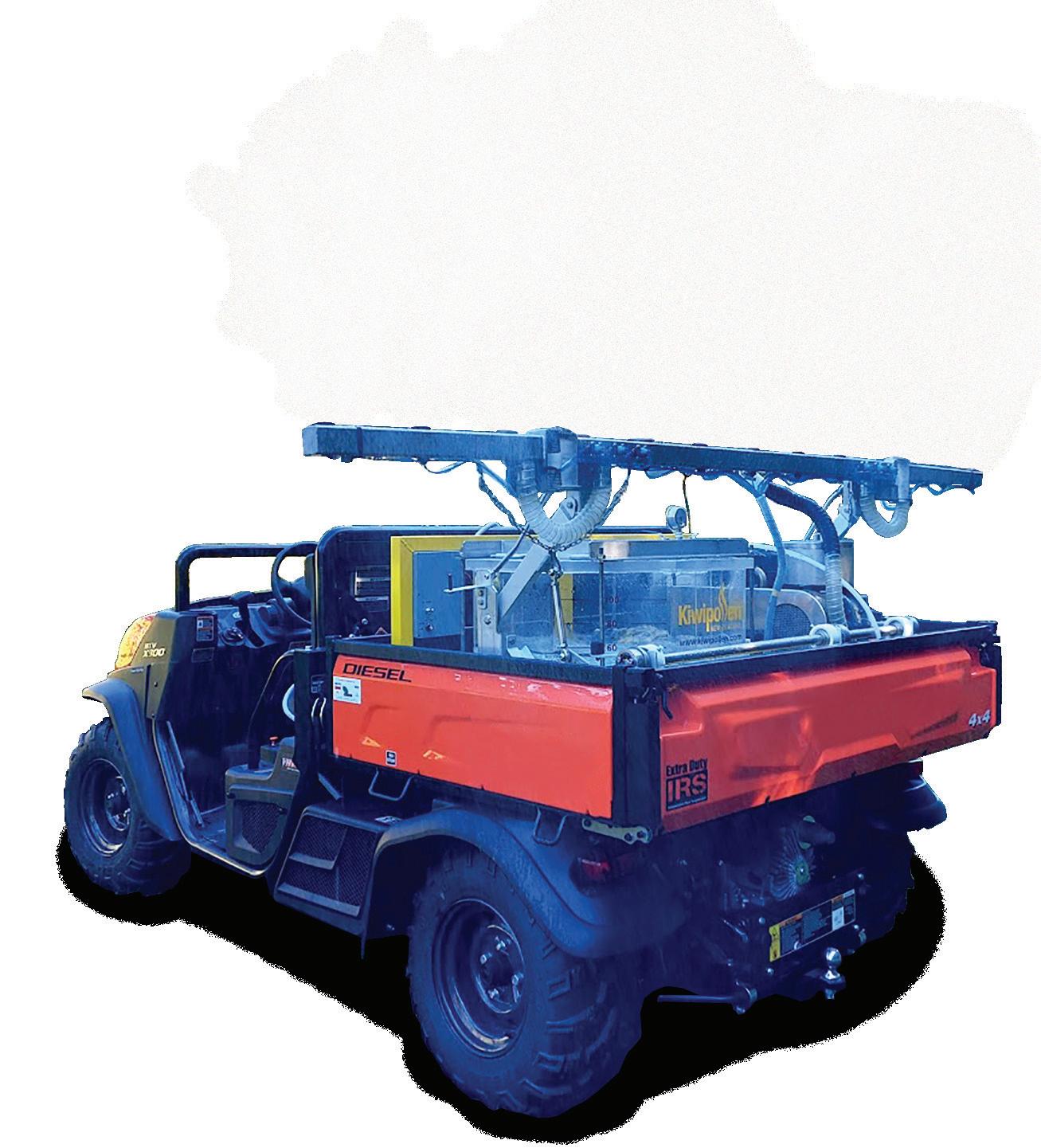
JACOB LUCAS
Instead of the usual sunny skies in the top of the South, hunters were greeted with rain and wind on the Opening Day of the 2023 game bird season. The Tasman area experienced very heavy rain on Friday before Opening Day, and as a result, plan B was required for a number of hunters who would have been shooting on rivers or some estuary loca-
tions and couldn’t get to their maimai.
Rangers were out and about during the day and caught up with a number of groups, some hurriedly looking for another location as flood water timed with a high tide meant plenty of water was coming up from below as well as from above. It’s not often in this region that you get the perfect coastal hunting combination of a morning high tide
timing with a strong northerly on Opening Day, but the Saturday was exactly that. Birds were flying all day and most hunters were happy. The Marlborough region had not experienced an Opening Day condition like that in two decades, ducks that usually roost on the Wairau River were being moved off by rising floodwater, searching the countryside for flooded paddocks to dine on worms, and some great hunting
was had, with good bags from both private and public land. It was a different scene on the West Coast, where a wet week led up to an Opening Day morning which dawned fine, with low cloud that soon cleared for some great hunting opportunities. Due to the high-water levels and flooded pastures, birds were more evenly dispersed among the hunters, meaning most got a slice of the pie and some great free-range
protein to take home. The game harvest survey, conducted by Fish & Game to determine bird harvest, confirmed what was seen by rangers, that there was indeed some great hunting on the coast, especially by those targeting paradise shelduck. Many of the West Coast hunters were visitors with historical connections, or new to the region and there to experience the superb hunting opportunities that are available.
Kiwi Pollen gets a new chief exec
Kiwi Pollen of Te Puke has appointed Monica Roach as new CEO.
Monica is taking over from her parents Jill Hamlyn and Graeme Crawshaw after their 34 years with New Zealand’s first commercial kiwifruit pollen company.
While Jill and Graeme remain an integral part of the business, Monica is stepping up from her last two-and-a-half-year role as GM at Kiwi Pollen.
Having grown up on an organic SunGold orchard, Monica has been inspired by her parents’ ability to raise a family, run businesses, and contribute to the wider kiwifruit industry through governance roles in the Export Institute, BioGro, and COKA.

Eight years’ experience as an in-house lawyer in Wellington and London has given her experiences across a range of industries and organisations. Monica has recently been selected as one of four in Zespri’s Industry Governance Development Programme for 2023.
“I aim to gain a deeper understanding of the kiwifruit industry and the challenges ahead, and subsequently contribute to new initiatives,” says Monica, “and I am excited to see where new thinking and a fresh approach will lead the pollination business, while maintaining our core ethos of creating value and profits for kiwifruit growers”
Always striving for a better way For specifications, price and availability Tel: 021 0894 2040 or email: admin@kiwipollen.com Limited supply - call now Kiwi Pollen’s ATV Mounted PollenAid® Wet Sprayer is a new and improved broadcast pollen applicator with proven performance, design and adaptability. ATV kindly supplied by R&R Tractors Always striving better Tel: 021 Limited supply - call Kiwi Pollen’s ATV Mounted PollenAid® Wet Sprayer is a new broadcast pollen applicator performance, design For specifications, price and availability Tel: 021 0894 2040 or email: admin@kiwipollen.com ATV kindly supplied by R&R Tractors 22 June 2023 News Farming TOP SOUTH MONTHLY
Monica Roach takes over at Kiwi Pollen.
Photo: Supplied.
WEST COAST
Competition an opportunity for self-improvement
BARBARA STUART
Regional winners of the NZ Dairy Awards, Ricky and Maria Johnson, say they got a lot out of entering the competition.

The whole process took them on a path of self-analysis of their business goals and on farm practices which has been helpful. Ricky and Maria would encourage others to enter the competition, they enjoyed the experience and have gained a clearer understanding of their business and future.
“We entered because we were told this year was about hands on farming. The judges were great, and they gave us excellent feedback, we learned a lot from the process. What’s always been good about farming in our region, at dairy discus-
sion group people will say what hasn’t worked for them. So, entering the competition for us was not about trying to prove we are good. It was an opportunity for self-improvement and to learn more,” Maria said.
The couple are fifty fifty sharemilkers with Rob and Jane McBeth at Maruia, they plan to calf 450 cows next spring.
“In the regional competition it was their health and safety, people culture and financial management that gained them the most points,” Ricky says.
The Auckland finals were also enlightening for the couple.
They knew they wouldn’t win at a national level, but they now know how to use an Uber.
The president of the Dairy Awards showed them how to download the app and order a Uber, laughs Ricky and Maria.
Westgold upping Australian presence

Westgold is upping its presence in the Australian market after a positive response to its butter and cream products at a major Australian food show.
Westland Milk Products General Manager Sales and Marketing
Hamish Yates says Foodservice Australia 2023 was an excellent opportunity for Westgold to connect with thousands of Australian buyers from the food and hospitality industry.
More than 10,000 people, including chefs and retailers, attended the three-day food show held this month in Melbourne.
“At this, our first significant appearance at a major food show in Australia, we succeeded in building awareness of our Westgold brand and products, and we are confident that we will gain new customers and boost our sales as a result,” Yates says.
Westgold has been focusing on the Australian retail market for a number of years where its butter sales have continued to increase.
“We have also seen good growth in our food service sales throughout Australia. Our products are now distributed by branches within the Bidfood, Superior Foods and PFD Food companies, who are significant suppliers in the Australian market,” he says. “Given the growth in the market to date, the time was
Enjoying the milkers life in Karamea
BARBARA STUART
community for raising children,” Isaac says.
now right for us to further promote our distinctive, high-quality products in Australia.”

Those attending the food show were able to sample Westgold’s products, either with bread, in shortbread or with choux pastry. Westgold’s chef was also available to talk about the specifics of working with the products including their performance in certain dishes.
“As New Zealand’s second largest butter manufacturer, we were able to show the scale of our supply. Chefs and bakeries, in particular, liked the quality, flavour and creaminess of our butter and cream. A lot of people who visited our stall resonated with the Westgold story and liked that our butter is made using the traditional Fritz Churn method,” Hamish Yates says.
“The team onsite also met some of Westgold’s “super fans” – those retail buyers who already loved the product – and it was a great opportunity to speak to these consumers directly.”
“We are seeing the results of investing time and money in increasing our food service sales in Australia. We have a large number of meaningful leads from the food show which we, along with our Australian importer, will now follow up on.
Isaac and Katana Ludlow are enjoying their first season in Karamea as lower-order contract milkers for Roger and Jean Gibson. Isaac says, he’s hardly been off farm all season, that’s how much he’s enjoying working for the Gibson’s. They calve 450 Friesen cows, and the property has a seasonal three-year average 205kg of milk solids, supplying Westland Dairy company.
The couple have two small children. “Karamea is a very nice

Isaac and Katana shifted down to the Westcoast from South Waikato following his parents so that they could be nearer to family, and he says the shift has lived up to expectations.
“The climate is mild and great for growing grass,” reports Isaac. “We winter all stock on farm, it’s a closed pasture-based system, and the stocking rate tends to be lower than the intensive central North Island farms which makes for
 Isaac Ludlow
Isaac Ludlow
lower grazing costs.” Living in Karamea has its benefits but the downside is the 80km from Westport over the hill which adds further costs to bringing in fertiliser and any extra feed. This season they have been able to milk a bit longer as it’s been mild with enough rain but they’re also watching costs closely. The lower pay out and high cost predictions have created a lot of uncertainty for the coming season, therefore they remain cautious.
West Coast Farming TOP SOUTH MONTHLY June 2023 23 Suppliers of all grades of industrial and household coal • West Coast sub-bituminous coal with low ash, low sulphur and clean burning qualities • High grade West Coast bituminous low ash coal • Premium grades available for your boiler or multi fuel burner • Bagged coal from 20kg to 1 tonne • Bulk deliveries • Coal storage in the Canterbury region for continuity of supply Give Mark a call on 027 531 0998 for a competitive price to have your coal delivered direct from our mines to your place. Phone 0800 110 602 Email mark@birchfieldcoal.co.nz www.birchfieldcoal.co.nz
Maruia sharemilkers and regional winners of the NZ Dairy Awards, Ricky and Maria Johnson.
Photo: Supplied.
Small block holder event at Golden Bay Service Centre
BARBARA STUART
Golden Bay’s, Rural Service Centre, in conjunction with Ospri, held a special event for ‘small block holders,’ recently. They used a panel of topical speakers to help inform clients about their responsibilities as owners of livestock.
Heather Alexander from Ospri gave a talk about the importance of recording animals movements on and off the property, even if you only have one cow. She made herself available for drop-in sessions over several days to support farmers learning to use the NAIT system. Karl Finnegan, head vet at the Rural Service Centre explained the five freedoms of wellbeing to consider for all stock people may own. These are having an animal welfare plan or drench plan which give consideration to trace elements, food, water, shade, a vaccination program, plus freedom from pain and, importantly, space to exhibit natural animal behaviours.
The new MPI on farm rep, Blair Shaw was also present to discuss biosecurity and how MPI is now supporting small holders instead of SPCA.
“Using yards on someone else’s property should be recorded as a NAIT movement.” Plus, getting advice from your local farmer is often a good first step when faced with animal welfare concerns. Federated Farmers also gave a brief outline of their role and the work they do to ensure that rules are workable and just for everyone. The event ended with a barbecue and the opportunity to meet, mingle and discuss issues with others attending.
Federated Farmers Golden Bay, June 2023
ANN THOMPSON
It’s Federated Farmers’ AGM season, and like all the other 23 provinces across New Zealand, Golden Bay recently held its own. These provincial AGMs are held before the national AGM, which is being held in early July.

Golden Bay’s AGM was held in Pakawau Hall. This hall is a Memorial Hall, and consequently well-funded by the Government’s Provincial Growth Fund, and for the evening meeting it looked terrific, was nice and warm, the company good and the food delicious.
Provincial President Cherrie Chubb added to her written report, talking about the recent submission she made on behalf of Federated Farmers Golden Bay members (and by default, all other farmers) to the Tasman District Council on its 2023/24 Annual Plan.

As usual, the main contentious point was the rates, with the Annual Plan proposing an increase in the average rates by 9.06%. This is a 5.02% increase on what had been proposed in the Long Term Plan set just two years ago (an increase of 4.04% was proposed) and signals a rate increase by over 13.2% for farmers. While it is acknowledged that external factors (inflation, government reforms) are driving uncertainty within the council, this 9.06% rise is not prudent or sustainable in the present economic climate.
She made sure the councillors and senior staff all heard that farmers are not an infinite
source of revenue for council rate increases. Supporting this push-back are the economic forecasts from both Beef & Lamb NZ and Fonterra. Beef & Lamb recently announced farm profit before tax for sheep and beef farmers is expected to fall by a third in 2023 following reduction in exports, while Fonterra has recently announced a further fall in the farmgate price/ kg of milk solids, which have continued to decline over the last 12 months. These factors point to harder times ahead for the entire community in Tasman District. Incomes of rural ratepayers will in no way increase to the same extent as the proposed increases in rates, with the implication that the costs the council is imposing on its ratepayers, will squeeze out other areas of expenditure. Farmers’ ability to pay rates is tied to their ability to productively farm the land, and not to the fact that farm land is more expensive than residential properties. Requiring money to go
into paying higher rates than expected will lead to cost cutting in other areas which will affect spending in the local economy.

The Federation’s submission urged the council to sharpen its pencils with the aim of avoiding rates increases and to keep the rates capped at the existing or even reduced level.
Pax Leetch, Golden Bay’s Meat & Wool Chairperson, acknowledged how tough farming has been for the sheep and beef sector this season, and reminded us all to think of the positives that come with living life on the land.
Golden Bay’s Federated Farmers Dairy Chairperson, Tyler Langford, spoke of the nationwide conversations about adding value to those calves that will not be kept on farm as replacements in the dairy herd.
Wayne Langford also spoke. He has now stepped up nationally into the role of Acting President of Federated Farmers and so has stepped off our local executive. He spoke
of the recent governance review carried out by Federated Farmers nationally.
Richard McIntyre, who is the national Federated Farmers Dairy Chairperson and a guest at the AGM, addressed the meeting. Richard has come up through the Sharemilkers’ Section and, to get some balance into the Fish & Game Council, successfully stood as a member of that council. His tactic there was to sit as a farmer (as well as a keen hunter and fisherman) around the table, working to get the common values of looking after the land and the fisheries above the parapet and out in the open.
Gavin Forrest, retiring from Federated Farmers after some years as the general manager of the policy team, gave some highlights from his interesting career. As he pointed out, success for Federated Farmers is marked by ‘radio silence’. When an issue is contentious, everyone is shouting about it. When it’s been solved the phones go quiet and everyone forgets the issue. Getting the solutions into the ‘Goldilocks’ zone (not too bad, not too good, for all sides) is key. And yes, there was an election, which returned all the incumbents for Federated Farmers’ Golden Bay;
President: Cherrie Chubb. Meat & Wool Chairperson: Pax Leetch. Dairy Chairperson: Tyler Langford. Financial Officer and Secretary: Daphne Woods. Executive Members: Sue Brown, Ann Thompson. Minute Taker: Maree Edwards.
Celebrating life your way
are available 24 hours PH 544 4400 24 Champion Rd, Richmond wrfs.co.nz 24 June 2023 Tasman Farming TOP SOUTH MONTHLY
Choose how you remember the life of your loved one by working with our friendly and experienced team. We
TASMAN
FFNZ Golden Bay, Executive and guests. L-R, back row: Gavin Forrest, Daphne Woods, Wayne Langford, Cherrie Chubb, Pax Leetch. L-R front row: Sue Brown, Tyler Langford, Ann Thompson, Richard McIntyre. Photo: Supplied.
Welcoming farmers after five years

A group of 70 farmers and their families were shown around Fonterra’s Tākaka site for the first time in five years. The tour took place on Friday May 12 and was a great opportunity for farmers to learn how their milk is used and processed after it leaves the farm.
A 50-strong team processes milk into skim milk powder at Tākaka. The raw milk is first made into standardised skim milk, and then turned into powder for the GDT. The skim milk powder is then used as an ingredient in a vast number of differ-
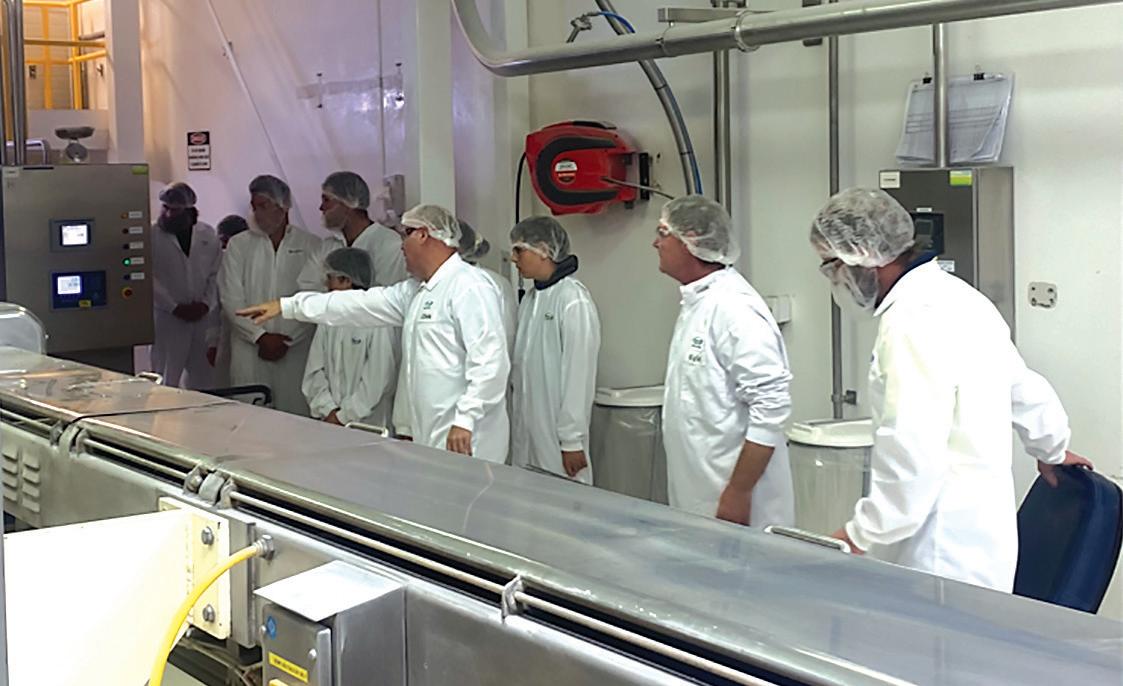
ent products like ice cream, chocolate, beverages, and cultured applications. The group of farmers and family started at the high-hygiene red line and were chaperoned into the production plant in their white overalls, white boots, hair nets, and, for some, beard masks.
Chris Sangster, Tākaka’s production supervisor, walked the group through the end-to-end process flow – milk entering the site, separation, evaporation, and drying. Kyle Sangster, a shift supervisor, then took


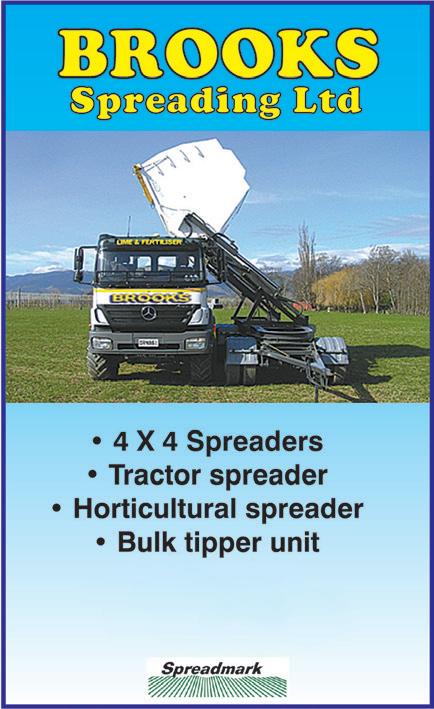
the group into the packing plant, where the skim milk powder is packed into 25kg bags, ready for export.
Chris Sangster says it was great for the site and farmers to get together.
“The site team really enjoyed sharing how we convert the farmers’ high-quality milk into skim milk powder. And all the inquisitive questions from our engaged visitors was a delight for our team,” he says. The farmers appreciated the opportunity to see their high-quality milk turn into skim milk powder.
Nelson Federated Farmers Update

The provinces 78th Annual General Meeting, recently held in Murchison, was a relaxed, family friendly social night, with Murchison’s Rural Women group putting on a mouth-watering homecooked meal that was enjoyed by all.
Stephen Todd, who was re-elected as Provincial President, thanked the small handful of committee members, chairs and supporting parties that contribute to regular meetings and events enabling the region to continue to have an active Federated Farmers branch.
Stephen also highlighted Federated Farmers clear stance on He Waka Eke Noa and reminded everyone that farmers can have confidence that feds will stick firmly to these following bottom lines and won’t accept anything that doesn’t meet them:
1) We won’t support emissions pricing until there has been a review of the current methane reduction targets that takes the different warming impact of methane into account. Our current methane targets are unrealistic, unscientific, and go further than is needed to stop farming’s contribution to warming.
2) We will only support pricing for the purpose of incentivising the uptake of viable mitigation options. Anything else is just a tax on a productive sector who don’t have options. Because
Kiwi farmers are already the world’s most emissions efficient producers of milk and meat, we are going to need new tools and technology to support further reductions.
3) We won’t support emission pricing if it’s just going to lead to what is called ‘emissions leakage’. It makes absolutely no sense to reduce our production here, only for the gap in the market to be filled by a less emission efficient producer. That will just ruin our economy while increasing global emissions.
Long time Meat and Wool Chair Kerry Irvine reported on his concern around the urban / rural divide and how undervalued he feels New Zealand farmers are. ‘I remember seeing a Facebook post, FARMING - the art of losing money while working 400 hours a month to feed people who think you are trying to kill them. The
world we are creating is one of real concern to me. The urban divide is all too real. The misunderstanding of what we do and why we do it is all too real. We’re good at farming but not good at telling our story. The products we produce, our roots to the land, the story that has built New Zealand, an industry that’s a world leader in grass fed products with the lowest carbon footprint in the world. The products we produce are world leading and that’s a story we need to celebrate.’
Many related to Kerry’s report and these shared concerns brought attention to the fact there has never been a more important time for the need of independent rural advocacy organisations such as Federated Farmers.
The meeting finished with an informal talk from Gavin Forrest, Chief Advisor at
Federated Farmers, who has over thirty years’ experience working in the policy and advocacy space for farmers, growers and their communities.
In response to the continued challenges from the significant flooding event last year in the Murchison area the province has made a generous donation to a Murchison rafting company to assist in the clean-up of balage wrap, from lost feed, that has that ended up in the river and on the riverbank. With adverse events in mind the province encourages all famers and growers to take time to explore how they can get ready for inevitable future events, including assessing the location of stored feed – is there a more suitable location with less risk of losing feed in a flood situation?
Regarding this year’s Budget Federated Farmers asked for ‘absolutely nothing’, and it’s safe to say the Government has exceeded expectations on that front with no new spending for farmers. Instead, what was requested was that the Government stop weighing hard working farmers and growers down with impractical, unpragmatic, and unfair regulations. Federated Farmers will be calling on all political parties to announce how they plan to do that in the lead up to the 2023 General Election.
Tasman Farming TOP SOUTH MONTHLY June 2023 25 0800 542 383 Dean 027 431 4090 Ben 027 571 6003 62 Gladstone Road, Richmond Phone 03 544 6122 www.stihlshoprichmond.co.nz ALL EYES ON YOUR GARDEN THIS AUTUMN WITH STIHL SHOP GET FREE UPGRADES ON SELECTED POWER TOOLS PLUS OTHER GREAT DEALS* *Valid on selected products from 1 March 2023 - 31 May 2023 or while stocks last. Terms and conditions apply. See in-store or online for details.
TASMAN
Stephen Todd, Nelson Federated Farmers Provincial President, with Kerry Irvine, Nelson Federated Farmers Meat and Wool Chair, at the provinces 78th Annual General Meeting.
Photo: Supplied.
Farmers inspecting Fonterra’s Takaka factory. Photo Supplied.
Subdued dairy markets set the tone for new dairy season
With global milk supply returning to growth in key production regions and Chinese dairy demand expected to remain subdued until the latter part of the year, Rabobank has announced an opening farmgate milk price forecast of $8.20kg/MS for the 2023/24 season.
The pressure is on, global dairy markets look completely different than they did 12 months ago.
“At this stage last year, market fundamentals were very tight with limited supplies in export regions, aggressive import demand by Chinese buyers and supply chain issues exacerbating buyers’ urgency to procure raw materials,” report author, senior agricultural analyst Emma Higgins said.
“Since then, we’ve seen a return to growth in milk supply across most of the export regions, sluggish Chinese import volumes as the country rebalances its internal market, and widespread demand rationing in many other dairy markets across retail, foodservice and ingredient channels in response to food price inflation and higher sticker prices.
“Milk prices in export regions have followed the commodity cycle, none more so than the New Zealand dairy sector, which is often the first mover in price cycles,” Ms Higgins said.
“Farmgate milk prices are now catching up to global commodity market trends and are moving lower in 2023. And with global dairy market fundamentals likely to remain under stress in the short-term, we’re forecasting a farmgate milk price of $8.20/kgMS for 2023/24, with this based on an exchange rate of USD 0.63 cents.”
China key to dairy price rebound Ms Higgins said, as always, the cycle will turn and dairy prices will rebound – but the timing of this will hinge on meaningful imports from Chinese buyers.
Emma Higgins
“China’s dairy market rebalance is underway as production growth rates slow, demand is showing some encouraging signals of recovery and local inventories are being worked through. And these factors will help buoy global dairy markets as we move through this year,” she said.
Marlborough Federated Farmers


Government told to “reduce farmer compliance costs”
The best thing the government could do for the primary sector now is to reduce compliance costs, particularly from current and proposed regulatory pressures associated with a raft of unworkable environmental regulations and unjustifiably high methane reduction targets. So said Nick Clark Federated Farmers NZ’s senior policy adviser and solicitor to the 2023 annual general meeting of Marlborough Federated Farmers held in early May at Renwick.
tion occur.
“It’s often argued farmers are responsible for 50% of New Zealand’s total emissions. This is a misleading statement as the key agriculture emission, methane, is a short-lived gas –quickly reverting to its source gas being carbon dioxide.”
We want those bills ditched
to justify the reforms, again as these sorts of reforms often are.”
Complex and costly layers of governance and bureaucracy and the remoteness will mean less accountability and sensitivity to the needs of local people. Meanwhile, taking away such a key activity along with RMA reform will impact on the viability of local councils and Federated Farmers’ fear is it will trigger amalgamations making councils more remote from their communities.
“As a result, dairy commodity prices for whole milk powder (WMP) and skim milk powder (SMP) have fallen between 30 and 40 per cent since peak commodity prices in 2022 and are now at, or below, the average price over the previous five years.” The report says farmgate milk prices are feeling the pressure in most export regions.
“The short-term outlook suggests more pressure is possible, but later in 2023 we should see more meaningful purchasing activity from Chinese importers, coupled with improved demand tension from other buying regions in the face of low buy-side inventories.”
Ms Higgins said China’s ability to increase domestic production would be impacted by New Zealand’s decision to end live cattle exports.
“There’s huge pressure on all New Zealanders, including farmers who are also facing the impact of weaker commodity prices on their incomes, increasing finance costs as interest rates soar, and increased farm input costs,” he told the 40-odd gathering. An election year almost always brings a unique perspective to the policy landscape and each year is different. In 2020 it was all about Covid. In 2023 it’s all about underlying inflation and the cost-of-living, pressures not seen in decades.
Dump the Bills
Nick Clark identified resource management reform as a major concern.
“The two bills currently in the House that are set down to replace the RMA are appallingly bad and will make the whole resource management system worse not better. We want those bills ditched,” he said. Another important issue is agricultural emissions pricing, where Federated Farmers remain firm on three bottom lines:
a) Federated Farmers will not consider supporting an emissions tax without a scientific target for methane deductions based on achieving no additional warming by 2050,
b) That any tax be used exclusively to incentivise the uptake of viable and cost-effective mitigation options available to New Zealand farmers, and
c) That no emissions leakage or reductions in food produc-
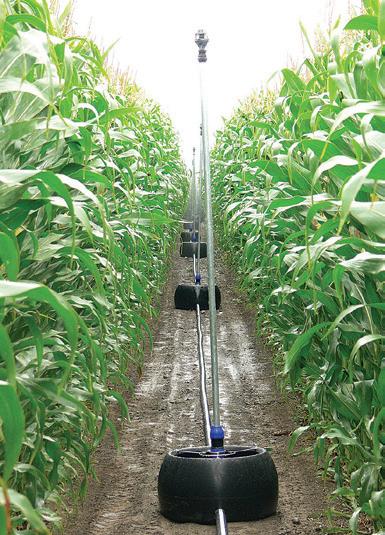
 Nick Clark
Nick Clark
In terms of emissions New Zealand farmers are amongst the most efficient in the world and agricultural methane levels are close to the point at which they are causing no additional warming. But if production is reduced, it will be taken up by less efficient producers overseas and global emissions will rise.
Unworkable
Nick Clark said third on the list of concerns is unworkable freshwater regulations around winter grazing, stock exclusion, culverts, and wetlands.
“These regulations have been a disaster, with them so poor that they have had to be redone multiple times and they are still not right,” he said.
“This is causing confusion and uncertainty. If only the government would listen to us, we would have told them so and offered constructive solutions, but Ministers were closed to any input from us.”
The Three Waters reforms drew criticism
Federated Farmers is opposed to the four (now 10) proposed mega Water Services Entities he said. “The new structure will likely be more costly to implement than expected, as these sorts of reforms often are, and we are similarly sceptical about the benefits cited


Marlborough president Evan White also referred to government performance which was resulting in low farmer morale. He cited the “constant barrage” of poorly thought-out legislation from central government that is resulting in uncertainty in rural New Zealand.

Pat on Back
He paid compliment to the valuable work Federated Farmers achieved on behalf of farmers.
“We, indeed all farmers, should support Federated Farmers and its policy team who work tirelessly for primary producers,” he said.
Meat and Wool chairman Richard Dawkins in his report said government changes to the HWEN document were unacceptable.
“Farmers will have less expendable income to invest, taxes will be lost in the inefficient bowels of government and financial pressures will lead to land use change causing stock numbers to reduce in New Zealand and global emissions will increase.”
He said New Zealand farmers are the least subsidised in the developed world and the most carbon efficient.
“Government must work with farmers - not against - and get it right from the outset,” he said.
Elections resulted in the re-election of Evan White as president and Richard Dawkins as vice-president.
Irrigation NZ Certified Designers • Pumping & Filtration • Vineyard Irrigation • Rural Water 26 June 2023 Marlborough Farming TOP SOUTH MONTHLY
marlborough
TONY ORMAN
Ben’s father’s advice - “give something back to community”

TONY ORMAN
Ben Minehan - Marlborough
District Councillor for the Marlborough Sounds Ward - never forgot his father’s advice. His father who served three terms on the West Coast Catchment Board reckoned it was a rewarding experience in giving something back to the community. That viewpoint was reinforced later by a Marlborough District councillor Leon Leslie who told Ben the same philosophy.
“Somehow I never forgot that advice,” smiles Ben. “I guess the two independent, but similar advice was the impetus for me to stand for the Marlborough District Council in the Sounds ward.”
Born on the West Coast, Ben’s first 12 years were spent on a 1200-acre (480 ha) beef and sheep farm at Harihari. Then the family shifted to Marlborough to a sheep and beef farm at Okaramio.



Today, 48-year-old Ben Minehan
with wife Melody, farm 30 acres at Okaramio where they currently run 90 ewes plus 40 lambs and nine steers. Two daughters, fourteen and twelve years old and a son nine years old complement the family.
His leisure interests are saltwater fishing and scuba diving down the Sounds, hence the strong Marlborough Sounds connection. Trout fly fishing and duck, and game bird hunting are other activities.

Ben is no stranger to the Marlborough District Council, where in a career path following a Bachelor of Science degree at Lincoln, he worked for MDC as an animal control officer and then on to weed control running a weed control team. That led to him setting up his own company, Weed Solutions, dealing in control of brush weed, wilding pine, nassella tussock, willow and others.
In standing for the Marlborough Sounds ward in the election six
months ago, Ben wanted to give a rural Marlborough as strong a voice as possible around the council table and on committees.
“I wanted to represent the rural people. With urbanisation, there’s a tendency for rural people to be forgotten,” he explains.
In the six months as a new councillor, Ben has found the experi ence rewarding just as his father and Okaramio neighbour Leon Leslie predicted. New mayor Nadine Taylor is excellent, while the
What makes high performing farms successful?


ANDREW RITCHIE
The Top of the South Dairy base report for 2021/22 was recently released with one of the main objectives to identify high performing farms. A meeting was held for the Marlborough discussion group in Havelock hosted by the DairyNZ facilitator for the top of the south area Mark Shadwick. The data was collected from 32 farms and reported on trends within the group. Half the farms in the area were irrigated and half
were not, and the average cow herd amounted to 380 cows. It was concluded that the use of nitrogen should be regarded as a form of supplement and should be used at times of the year when there was a pinch in the supply of available feed. It was concluded that there was no relationship between purchased nitrogen surplus and profit. There was a very small relationship between the amount of methane produced by a ruminating animal and profit. Return on assets examined found no ev-
idence between production and ROA. The conclusions reached from the data provided showed that the farms making the most profit fed at least 10% more pasture and crop than the rest who submitted data. Both high cost or low cost can be highly profitable. Operating costs were closely monitored, and stocking rate was matched to pasture growth. There was huge diversification amongst the highly profitable units. Some were once-a-day milker; others were twice a day. Milk sol-
ids per cow ranged from 350 to 540, and the live weight of cows varied from 400kgs to 540kgs. Nitrogen use ranged from 40 units to 182 units and supplement fed ranged from half a tonne to 10.3. In 2021 the average amount of pasture and crop eaten per cow in the most profitable units was 4354 kgs compared to 3946 for the remainder. Only emphasising that the most efficient and cost-effective way producing milk is to feed pasture, which fortunately is the NZ’s strength.
7 -

council comprising diverse and varied backgrounds are a good cohesive unit.
“The debate around council and committee tables is good and good natured,” he adds.



Asked about challenges to council, Ben identifies funding as a major, on-going issue. On the environment and given his career involvement with such issues, “wilding trees” are a escalating problem. Wilding trees? “Yes, it’s not just wilding radiata pines that are currently a big headache,” he explains. “Douglas fir - technically not a pine -and wilding trees such as willow, sycamore and others are going to be a major environmental problem in future years.” And with the Sounds, past

FOR FURTHER DETAILS CONTACT FARM MANAGER: GREG CROMBIE PH 0275 511 011 EMAIL greg@leefieldstation.co.nz LEEFIELD STATION 1171 WAIHOPAI VALLEY ROAD, MARLBOROUGH 9.30am MONDAY 19TH June 2023 Marlborough Farming TOP SOUTH MONTHLY June 2023 27 marlborough
New Marlborough District Councillor, Ben Minehan, enjoying the role. Photo: Supplied.
9 FRI & SUN MARLBOROUGH LINES STADIUM 2000 INSPIRATION FOR YOUR HOME GARDEN & LIFESTYLE WITH BUILDERS SPAS, FLOORING, HOME MAINTENANCE PLANTS HOMEWARES HEATING/COOLING ARTISAN FOODS & EVERYTHING IN-BETWEEN!
local forestryupdate
Market Update
MARCUS MUSSON Director, Forest360
As we bid farewell to the NZ summer, we also wave goodbye to what we thought earlier in the year would be a reasonable period of solid log pricing from our export markets.
May has seen export A-Grade prices drop to the
Ph 03 542 3769
Mob 021 223 1099 stuartforestry@outlook.co.nz
early $100’s/m3 from the mid 120’s in April and the mid $140’s in March. Although the April reduction was on the cards, May was completely out of the blue. Our reasoning for the initial expectation of reasonable returns for this period, were based on the low level of inventory in the Chinese market, compared to this point in time in previous years, which, would usually point towards upward price pressure. While we used to be able to operate at these lower price points a few years ago, continued inflation pressure has effectively added around 15% to the cost of production; resulting in forests located a distance from ports currently at, or below, break-even. The inflation debate is interesting when looked at in context of our largest export market – China. If you take the NZ inflation rate of 7.3% for 2022 and the forecast rate in the mid 6% range for 2023, we have a total increase of around 13.5% over the past 18 months. This is compared to China at 0.9% for 2022 and a forecast of 0.98% for 2023. Quick math shows a gap of around 12% between our production costs and the theoretical increase in revenue from our largest trading partner.
adver tising
Please check your proof carefully and approve it or submit corrections by the Final Yo u can now appro ve or submit changes to your ad within the ATOL system at a time that suits you. in your ad proof email to view your ad, then cl ick the APPROVE or CORRECTIONS button right from there -
What is apparent, is that Chinese log demand has reduced significantly from 2021 levels. We are looking at a demand profile similar to 2022, down 25% on 2021 and remembering 2022 demand was hampered by full covid lock down mode in China. If we look at the graph, it is not hard to see what pricing is going to look like based on history. This is simple supply and demand 101 with the market reaction to increased supply or decreased demand being reduced prices. So, in the face of subdued demand, the solution is to reduce supply. There is evidence of a reasonable increase in China’s domestic forest harvesting, which has historically provided logs around $US20/m3 cheaper than NZ radiata, hinting at a switch to lesser reliance on imported wood fibre. Should China decide to nationalize Taiwan, which some would say is just a matter of time, the ensuing trade sanc-
tions would have huge ramifications for all NZ primary industries and basically stop NZ in its tracks. That may be a scary thought, but as time goes on it is becoming more of a reality that China is becoming more self-sufficient and as such the need for a sustainable and profitable NZ domestic processing sector is vital.
adver tisingpr
Please check your proof carefully and approve it or submit corrections by the Final Proof Alterations Yo u can now appro ve or submit changes to your ad within the ATOL system at a time that suits you. Just follow the in your ad proof email to view your ad, then cl ick the APPROVE or CORRECTIONS button right from there - no new emails
So, if you are sitting on the harvesting fence waiting for A-Grade to reach $150/m3 before the go button on your retirement investment, you might be waiting a while so make sure that fence is comfortable. However, as history is a reasonable predictor of the future, one would expect we have hit the bottom of the cycle and prices should increase quickly, but probably not to the levels of mid-2021. Shipping cost is low, Chinese inventory is low, Forex is stable, and supply is reducing so the rebound could be swift; but it likely won’t be through increased demand.
The Professional Forest Management Company
of Choice.
The Professional Forest Management Company of Choice.

PF Olsen is the leading provider of independent professional forestry services in New Zealand. Contact us now for all your forest management needs:

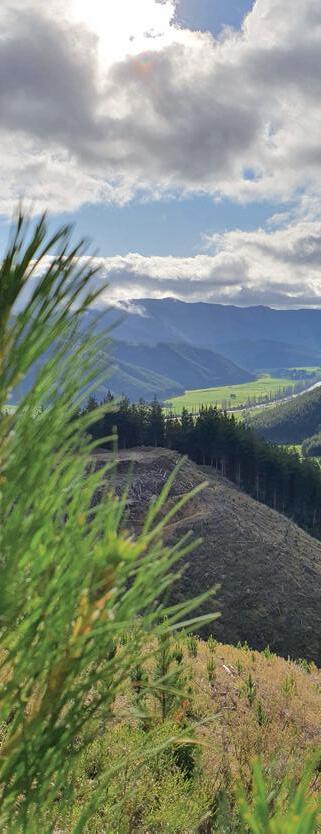
PF Olsen is the leading provider of independent professional forestry services in New Zealand.




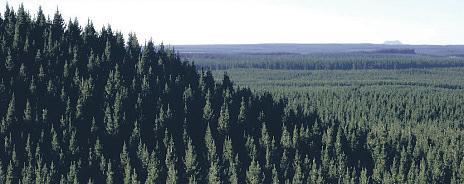
Contact us now for all your forest management needs:

• Harvest management and log marketing
• Harvest management and log marketing
• Forest establishment and tending
• Forest establishment and tending
• Forest valuations
• Forest valuations
• Due diligence on forest purchases/sales
• Due diligence on forest purchases/sales
28 June 2023 Forestry Farming TOP SOUTH MONTHLY
Stuart Forestry Ltd Independent Log Buyers Forest Managers Harvesting Marketing & Establishment
D
CH-8994297AA Nelson 03 544 0066 Blenheim
customer PF OLSEN & CO
(RMD) publishing 06/24/21 booked size CSQ QUART advert ID CH-8994297AA (100%) publication Adv Supp NEM dimensions 12.3X12.4, cms section CUSTOM SQUARE proofed 9/06/2021 12:22:08
03 577 6675
LTD
Nelson 03 544 0066 Blenheim 03 577 6675 customer PF OLSEN & CO LTD (RMD) publishing 06/24/21 booked size CSQ advert ID CH-8994297AA (100%) publication Adv Supp NEM dimensions 12.3X12.4, section CUSTOM SQUARE proofed 9/06/2021 The Professional Forest Management Company of choice PF Olsen is the leading provider of independent professional forestry services in New Zealand. Contact us now for all your forest management needs: • Carbon accounting and advice • Harvest management and log marketing • Forest establishment and tending • Forest valuations • Due diligence on forest purchases/sales With 25 years experience in the industry the Tasman Forest Management (TFM) team offer services in: • Forest and woodlot harvesting • Domestic and Export Log Purchase
Forest Establishment
Emissions Trading Scheme advise and management
Forest Valuation
TFM are part of the Forest Management Group with offices throughout the South Island, Hawkes Bay and Southern North Island To find out more www.forestmanagement.co.nz office@tasmanforest.co.nz Nelson 03 540 3177 Blenheim 03 572 7902
•
•
•
•
Forestry operation in action at Cable Bay. Photo: Barbara Stuart.
local forestryupdate


AWG decreases Mission a gets second life
At Wharf Gate (AWG) prices for export logs decreased $20-25 per JASm3 in April. The AWG price drop from March prices was largest in ports such as Tauranga, which had larger log price increases in March as exporters competed for volume. Log demand in China has increased steadily while log stocks have decreased slightly.
The fluctuating prices are due to effusive sentiment that the construction market was going to increase significantly. When the log demand didn’t increase as much as expected, log buyers and sellers started panicking.
The April PF Olsen Log Price Index decreased $11 to $124. The index has now reversed all the gains from the previous two months and is back at the January level. The index is currently $2 above the two-year and $1 above the five-year average.

Regarding the domestic log market most sawmills in New Zealand remain operating well below capacity. The structural market remains oversupplied. Some mills that were producing structural sawn timber are switching to instead produce clear sawn timber.
GEDI (Global Ecosystem Dynamics Investigation) is a NASA mission, launched in 2018, to measure above ground biomass on Earth. The information has been crucial for scientists to understand how deforestation has contributed to atmospheric CO2 concentrations and has allowed scientists to map habitats and biomass, particularly in the tropics, providing detail on the Earth’s carbon cycle. The mission was supposed to be decommissioned earlier this year, however, in a last-minute decision, NASA has decided to extend the GEDI mission, which was fated to be jettisoned from the International Space Station where it has been attached for the past four years, to make way for another, unrelated, mission. But a campaign driven by the scientists involved in the project helped the mission — the first to map Earth’s forests in 3D — get a
second life.
NASA now says the mission will take a hiatus for 18 months and the GEDI equipment will be put into storage then reinstated. In 2024 the GEDI will be returned to its original location and resume operation on the space station until the space station retires in 2031.

Data from the GEDI mission has been critical for scientists to understand how deforestation is exacerbating climate change.
“This mission is particularly valuable, especially at the
point where we are in now, in terms of climate negotiations and the recognition of mitigation efforts,” said Scott Goetz, deputy principal investigator at the GEDI mission. “It means a lot to me and my group, but it means a lot more for the broader scientific community as well.”
The GEDI mission uses spaceborne laser altimeters to measure the aboveground biomass on Earth. Scientists calculate the dimensions of trees based on the time it takes for the light emitted from the Interna-
tional Space Station to hit the tree and reflect back. Since the light also reflects off leaves and branches, the GEDI mission has also helped scientists get a fuller understanding of what a tree looks like, including details about girth, weight and canopy size.
Modelling forests in 3D is imperative to estimate the amount of carbon stored in them. About half of a tree’s dry weight comprises carbon, which is released into the atmosphere when it’s cut down or is burned up in a fire. When scientists and researchers can calculate the amount of carbon stored in an area of forest, it gives them a clear picture of how the carbon is distributed and how much is released due to deforestation.
Since GEDI data became publicly available in 2020, researchers and governments have been using it for a variety of applications.
Forestry Farming TOP SOUTH MONTHLY June 2023 29 SPECIALIST FOREST ADVICE • Carbon and Farm Integration • Native and Exotic Management • Harvesting and Marketing • Forest Assessment DISCOVER WHY AT www.ifsgrowth.co.nz 03 928 5755 | consulting@ifsgrowth.co.nz
Quality Used Tractors and Machinery




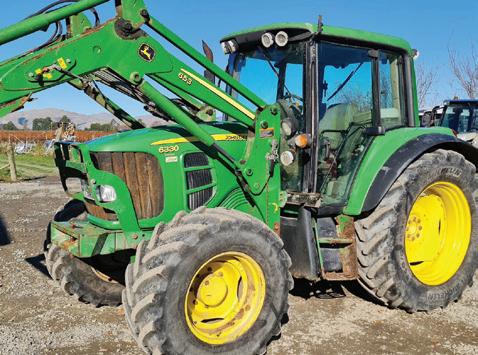
• Massey Ferguson 245 Power Steering Hustler Forklift very tidy - coming in
• John Deere 2250 4x4, non cab, GNS loader, good tractor - coming in
• Iseki 2160 22hp hydro in tidy order - $5,750
• Ford New Holland 7840 SLE and Pearson loader - $23,000
• Massey Ferguson 188 and loader
• Small 1.5 slasher and also 1.2 model
• Kuhn GA 300 single rotor hay rake tidy order$2,500

• Giltrap 3pl log splitter - $2,250
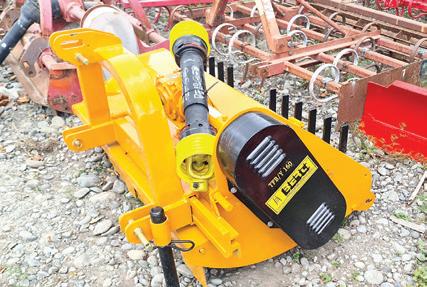
• Heavy duty 7ft back blade
• Pallet forks front uro and rear
• Hustler front fork lift suit 135 MF
• Fieldmaster Jumbo 1.8 slasher like new
• Rata vineyard cultivator crumbler range of sizes available
• Duncan 633 cultivator crumbler

• Dual wheels Snap/locks 38” 36” 34” 30” from - $2,200
• 11 tyne & 13 tyne grubbers from - $1,500
• Duncan 3m Maxitill very tidy - $2,000
• 9ft Cambridge roller - $1,800
• Trimax 1.8 Vineyard Mower, tidy order - $3,000
• Hydralada double in-row vine trimmer. Fully serviced with joy stick - coming in
• Mole plough good order - $1,850
Silvan 600l herbicide sprayer electric controls$5,000

Celli Tiger 190 Rotary hoe new blade 3m wide cage roller - $9,500
• Hustler SL 700 2 bale feeder very good order$11,500
• Celli Pioneer 170 Spike Rotar very good condition - $12,500
• 3 tonne tipping trailer - coming in
FARM MACHINERY & REPAIRS LTD Graham 021 228 3956 All prices plus GST
Berti TFBY 160 in very good order $6,750
1.8 MF grader blade excellent order - $2,500
Massey Ferguson 5713 prem model Dyna 6 4 remotes 3300hrs prof model loader. Good rubber. 5 Star screen fitted (being prepared) $95,000
Celli Pioneer 140 spike rotor original spikes excellent condition - $14,000
Hustler Katipo 1150 l sprayer 12m hy boom reel and Raven GPS like new $10,000 under new price
Daedong 80hp low hours great order - $25000
Same Silver 100.6 and self level loader near new tyres high hours good old tractor$22,500
John Deere 6330 premium 110 hp JD self levelling loader very good tyres, fully serviced and in good condition. $55,000
30 June 2023 Advert Farming TOP SOUTH MONTHLY
Kubota M100GX 4X4 Near new 1300hrs very good order $56,000
Moving Day – NAIT Compliance
Moving Day is the busiest time of the year for livestock movements. Good biosecurity practices, including National Animal Identification and Tracing (NAIT) compliance, are critical over this period.
If you are in charge of cattle or deer, you must make sure

they are tagged with NAIT tags and registered in the NAIT system.
When NAIT compliance is compromised, our traceability system is threatened, and we run the risk of having a system that will not perform in the event of another disease outbreak.
All animal movements between NAIT locations must
be recorded, even if there has been no change of ownership - for example, moving them for grazing or mating and even if the animals are exempt from tagging.
To record a movement farmers will need their NAIT location number, the NAIT location number of the other property, the date the animals left, or arrived at your prop-
Auctions deliver better than expected results
in demand.
Wool testing laboratories in New Zealand have been predicting colour measurements on greasy wool for more than 40 years on a commercial basis but for the past two years have reported higher than usual Y minus Z readings for coarse wool grown in almost all regions. Yellowing of wool fibres whilst on the sheep’s back is mainly due to a combination of humidity, wool grease, and suint (sweat), and given that the past couple of years have delivered a more even spread of both temperature and rainfall across many provinces, perfect conditions for discolouration have existed.
Wool auctions held during late April and until midMay delivered better than expected results for most coarse wool types in terms of clearance from the auctioneer’s rostrum, due in part to wool exporters who had significant quantities of their forward-sold wool stocks written off as a result of the Napier floods and subsequential crippling of the Awatoto wool scour, and whom were obviously active with requirements to replace their committed wool shipments, hence most average-to-good style body wools and bulky, good colour oddments were
Having said that, and whilst prices for good style, and good-to-average style second-shear and full length fleece certainly improved throughout that time frame, poorer style body wools only managed to tread water in regards to price, and many extremely highly discoloured fleece wool types eased further in value.
As earlier eluded, bulky oddments displaying average colour and even for fibre length (ie not contaminated by second pieces and lox) also drew better support than earlier in the year. Shorter oddments, or those very mixed in length and/or very low yielding, and/or very poor colour, remained difficult to move.
Only limited quantities of Halfbred and Corriedale body wools came to market during April and early May, however a handful of good Halfbreds in the twenty four to twenty six micron ranges were well sought. Similarly, very few Merino wools were sighted during April and May, however those which were offered out of season drew strong interest from the buying trade. A good quantity of mainly second-shear Merino fleece types was being catalogued at time of writing for the 25th May South Island auction, and solid traditional buyer interest was expected. Across the ditch, Australian wool auctions resulted in a mixed bag with relatively
high pass-in rates exceeding twenty percent experienced at a few sales, particularly during late April. Smaller daily offerings of around fourteen thousand bales during the third week of May saw slightly better clearances. Traditionally, pre-lamb shearing conducted during the colder months has delivered a very good white wool type for coarse wools, however with the degree of yellowness evidenced throughout the past twelve months, pre-lamb shorn fleece this Autumn/Winter period may not be as good as hoped for.
With lambing not too far off in the northern half of the South Island at time of writing, already visual reports have indicated that a few Autumn-shorn pre-lamb clips do not appear to be as good for colour as anticipated, however once those wools have been received in broker stores, sampled, tested, and catalogued, the trade will get a better understanding of whether or not there is any cause for concern.
It remains evident that offshore users of New Zealand still require well prepared coarse wool of good colour and even fibre length therefore in-shed preparation remains imperative if growers are to continue to attract demand.

I’d like to think there is a glimmer of light at the end of the tunnel!
That’s my view.
erty and the individual NAIT RFID or visual tag numbers of the animals that have moved. Farmers are also required to complete an Animal Status Declaration while moving animals to another property, a saleyard or meat processor, although there are excep-



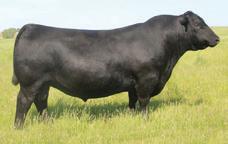

tions. If you want to find out what you need to do during the Moving Day period NAIT website has an easy-to-understand moving day decision-making tree and checklist that can walk you through the process step-by-step.
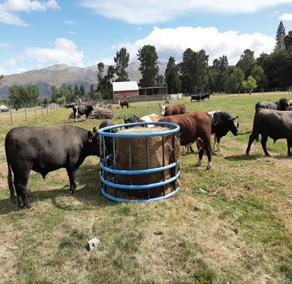
KITSETS FREIGHTED NATIONWIDE Ph: 027 487 6711 www.balefeeder.co.nz • Very strong, yet flexible • Lightweight 35kg – Staff and Stock friendly • Insulated – Roll it over the hotwire • Easily moved by hand – No tractor required • Will not rust • UV stable • Height adjustable • Don’t get stuck in the mud • NZ Made
MONDAY 12TH JUNE 2023, 1.00pm RICHARD & DENISE MARTIN P: 03 541 8559 M: 027 230 3098 E: richard@martinfarming.com 385 Church Valley Road, Wakefield, Nelson facebook.com/MartinFarming A BALANCED AND DISCIPLINED BREEDING PROGRAMME ANGUS | HEREFORD Bred and raised on steep hill country ON FARM R2 BULL SALE OFFERING SONS OF SAV Rainfall Milwillah Napa Grassmere Gallant 244 as well as proven HOMEBRED SIRES Livestock Farming TOP SOUTH MONTHLY June 2023 31 livestock
Three Rivers Bale Feeders
STAFF REPORTER
Phosphate in New Zealand soil
 JOHN BARNES Managing Director Fertilizer New Zealand
JOHN BARNES Managing Director Fertilizer New Zealand

New Zealand soils are naturally deficient in phosphorus hence the need for ongoing phosphorus applications.
There is an increasing focus on environmental issues, particularly as they relate to intensive pastoral farming. Phosphorus levels in our natural waterways are increasing, resulting in increased weed and algae. However, that problem can be reduced without jeopardising farm production.


There are essentially two types of phosphate rock, hard and soft. Hard rock must be treated with acid in order for it to be a useful fertiliser. There are very large deposits available internationally. Soft rock is chemically different to hard rock and may be applied di-
rectly to land and release phosphorus sufficiently quick to be a useful fertiliser.






Just as there are varying deposits of phosphate, these different deposits also have different levels of cadmium.
Fertilizer New Zealand has sourced Phosphate from mines which are known to have low cadmium levels. For more information on this, give us a call on 0800 337 869.

CORRECT YOUR CALCIUM MAGNESIUM

with Golden Bay Dolomite for a healthier system
Dryland cropping farmer Tom Rudge farms on the fertile mid-Canterbury plains between Rakaia and Methven. There are two predominant soil types on the property, a well-draining deep Templeton silt loam and a Lismore shallow silt loam. Nestled between the foothills of Mount Hutt and the coast, the annual temperature is 9.2 degrees with an annual rainfall of 967mm. The area experiences dramatic extremities with short, cold winters and occasional snowfall, switching to drought-prone conditions in the early summer months.
Tom specialises in an intensive crop rotation that consists of consecutive cereal crops, wheat, and barley, followed by a grass fallow period before returning to the cereal rotation, a cycle that is reliant on high nutrient inputs. Seven years ago, Tom become frustrated with their traditional NPKS approach as they were seeing the same issues paired with underperforming crop yields year-on-year.
Production was suffering in key areas:
The turning point came after Tom attended Neal Kinsey’s introductory soils course, summarising American scientist William Albrecht’s work. This was revolutionary as it not only focused on the volume of different elements present in the soil profile, but the relationship between them. The research resonated with Tom’s willingness to try an alternative soil science, and they haven’t looked back. Over the seven years since switching approaches, they have observed:
With these results, Tom “wouldn’t hesitate to recommend switching to Golden Bay Dolomite for other farmers to improve their crop health and production. GBD is easy to engage with, and there have been no problems ordering GBD products or delivery timeframes. Incorporating GBD into our cropping program is seamless and it goes on paddocks without any issues.”
32 June 2023 Fertilizer Farming TOP SOUTH MONTHLY
Learn how Tom lessened the pests and diseases plaguing his farm.
03 525 9843 | sales@goldenbaydolomite.co.nz | www.goldenbaydolomite.co.nz To find out more about the benefits of balancing your soil elements contact
SCAN HERE GBD Advertorial
GBD on
Crops were failing to establish quickly with strong growth High prevalence of pest and disease burdens Trace element deficiency correction had minimal improvement
1. Seeds establish a strong root system early 2. Seedlings experience less disease/pest pressure 3. Greater resistance to extremities like summer dry or wet downpours fertilizer
Got something to buy, sell or promote? Contact us: sales@nmf.co.nz Farming TOP SOUTH MONTHLY
horticulture
When policy is not fit for purpose
NARDINE TUNLEY
Submissions have closed on the government’s review of the Recognised Seasonal Employer (RSE) scheme. In the week before submissions closed, I was part of a cross [political] party delegation – led by Deputy Prime Minister, Carmel Sepuloni – to the Solomon Islands, Fiji and Tonga. Therefore, why is our policy still not fit for purpose?
The delegation discussed the economies of these Pacific nations, in particular, the role of migrant labour schemes in today’s world. There, are currently nine Pacific nations involved in the RSE scheme.
Each of these nations face different internal challenges. That is why they each want differ-
ent concerns about the scheme. Some nations want to send more workers while others are worried about a brain drain and social impacts.
The RSE scheme started 16 years ago as part of New Zealand’s supportive role in the Pacific. While the scheme assists in fulfilling New Zealand’s seasonal labour needs, it is also equally beneficial to the Pacific through the income that is injected into the Pacific economies and the skill development opportunities not readily available in the Pacific.
The money RSE workers earn and the skills they learn while temporarily in New Zealand en-

able them to build community facilities and develop small businesses that are of immense benefit to numerous Pacific communities.
However, the RSE scheme also poses challenges. I’ve mentioned the brain drain but there are also social challenges that need to be addressed. This brings me back to the government’s review of the scheme, and our concerns about what’s at stake if the review is rushed and doesn’t address the needs of each party involved in the scheme. The mounting costs associated with being an accredited RSE scheme employer and the recent minimum wage increase
could make the scheme an unviable labour option for growers. Many will have no choice but to curtail their involvement, and some may cease their growing operations altogether. If that happens, everyone will lose. Pacific workers will go elsewhere because they can and competition for labour is fierce, worldwide; while our industry will lose a skilled and valued part of its workforce at a time when it needs it the most, as our industry recovers from Covid and various adverse weather events.
Fit for purpose
Policy must be fit for purpose. HortNZ spends an incredible amount of time and effort advocating for growing in New

Zealand, and trying to ensure that new policy does not create perverse outcomes. Back in the country last week, I listened to a senior government official describe how they were having to work around a poor policy decision, in an area of great importance to primary production in our country.
The official was quite upfront about what they were having to do and those in the audience were astounded by the situation, asking ‘why not just change the law?’
To which the official replied, ‘it’s very hard to change the law’, which is why, if horticulture is to thrive again, we need to ensure that policy is right the first time, because the lost opportunity cost is far, far too great.
Managing inputs in a lower N environment
That is steadily becoming outdated as nitrogen applied during winter is one of the reasons for unacceptably high Nitrate N levels in groundwater.
Fertiliser sales this autumn are well down on this time last year with the primary reason being lower incomes and higher expenses.
Fertiliser can be withheld, particularly when there is an abundance of feed and favourable growing conditions, without any immediate impact on feed budgets, however the focus now should be on spring.

In well managed situations the feed on hand in early May has an important influence on the feed available in the second half of September, the time when demand is high and peak pasture growth is yet to arrive.
Mature pasture can be carried ahead by lengthening the intervals between grazings. Successful farmers will often graze no more than 1% of the available area daily during June and July prior to lambing and calving.
Until recently there was an industry wide attitude that lower covers during winter could be addressed with the application of synthetic nitrogen.
The price of nitrogen fertiliser products means the cost of the extra feed grown is currently as great or greater than bought in feed which has a higher nutritional value.
Comparative data shows that although farms applying nitrogen during winter experience earlier and stronger spring growth, they grow significantly less during late spring and summer than those where no nitrogen was applied during winter.
Winter is the time of rest and recovery for pasture plants. Having 90 days where there is no demand for extra above ground growth allows root systems to develop.
A deeper and larger root base ensures stronger growth during the next growing season. The same rest and recovery phase is just as important for animals and people.
When changing to a lower synthetic N input system bear in mind that removing anything from an existing fertiliser programme will lead to lessened growth unless it is replaced by an input that provides as much energy. There is somewhere between 5,000kg – 15,000kgN/ha in
the top 15cm of pastoral soils and only a small fraction of that needs to be made plant available for maximum growth over winter. This is easily achieved by increasing biological activity in the soil. Adding calcium creates the conditions which favour beneficial microbes and earthworms, and only a small amount in the form
of lime is enough to make a difference.
In the longer term the synthetic nitrogen can be adequately replaced by nitrogen fixed by clover and direct from the atmosphere, both free of charge with minimal leaching losses.

Functional Fertiliser first introduced DoloZest in 2003 as a soil
improver that improved physical soil structures and increased the rate at which nutrient was cycled. Based on Golden Bay dolomite it has the added benefit of supplying maintenance magnesium, an essential input on nearly all dairy farms and is a proven means of limiting calcium/magnesium related metabolic disorders in spring.
Part of its effectiveness is due to the increase in plant energy levels, particularly important in late winter and early spring aided by the inclusion of boron which helps build plant sugars. Properties where DoloZest is applied annually markedly reduce the amount of other magnesium supplementation. Pastures normally contain 0.22% – 0.25% magnesium a level at which well fed cows receive their required daily intake.
Mature pasture, 3500kg+ DM/ha, also contains much of the long fibre necessary for good rumen function, without which minerals and vitamins are not fully utilised.
DoloZest treated pastures remain palatable even at a length where excellent utilisation is not expected and due to its rapid incorporation into the soil, it’s never too late to be applied.
For more information call Peter on 027 495 0041 or 0800 843 809.
Horticulture Farming TOP SOUTH MONTHLY June 2023 33
Beautifully mature autumn pasture. Photo: Supplied.
And the winner is...?
Country MOTORING
Something a little different this time.
Alongside 4WD training on our Canterbury farm we get to demonstrate and evaluate vehicles for companies and government departments. Virtue signalling by the current government has forced many companies to look to EV’s or Hybrids for company vehicles. Recently a well-known rural service company brought four Hybrid SUVs to test and evaluate as company vehicles to service the rural sector. So, to replace
the fleet, the hybrids selected are Subaru E-Forester, Nissan E-4orce X-Trail Hyundai Tucson E-Hybrid and the Toyota RAV 4 Hybrid. Not considered were the Kia Hybrids and the Mitsubishi Outlander PHEV. As readers know, I have driven and reviewed the four that appeared on the farm while I’m still waiting to be offered the other two.

Representatives from the four car companies had an opportunity to address the the rural company selection team made up of both senior executives and the company reps seen on farms.


I felt that was a good move to involve some of the team that will actually drive the cars.
After on-road, both sealed and
Looking for storage?

We have long and short term storage available for household item, boats, caravans, and trailers. Marlborough based.


shingle, the off-road demonstration revealed some interesting differences. Fleet Partners, the lease company supplied a superb BBQ lunch. Manager, Debbie Phillipson, said the opportunity to work with her clients and experience the capabilities of vehicles she leases was incredibly valuable Also there was 4WD guru Pete Ritchie to help demonstrate, choose a suitable off-road course and shepard the drivers. All four start in EV mode, had battery only operation giving limited range and the petrol engine cut into both charge the battery and add power. On-road the favourite was the Tucson, followed closely by the X-Trail, were much quieter with the Forester and, oddly, RAV 4 less well received, citing the on-road noise levels So no clear winner, but what of the interior? All models were five door SUV’s though they varied in interior space, were found to be adequate for the gear mostly found in the cars. However a need identified was to have a full-sized spare, due to the severe road conditions the cars need to negotiate. Only the RAV4 had a
full-size tyre that fitted beneath the boot area floor. Nissan and Subaru eschewing the spare for an aerosol tyre inflator in case of a puncture. The Forester supplied for the review though had a $2000 aftermarket ‘box’ in the boot holding a full-sized spare which completely filled the area to back seat height, not really very suitable was the restrained view of one rep Traction, ground clearance, approach/departure angles, water crossing, side slope driving and accent decent ability were all canvassed with differing results.

Off-road all were compromised by ground clearance and the electric only drive to the rear wheels.
Subaru however shone in slippery and slope conditions being the only one with rear wheels drive shaft connected to the petrol engine.
Water crossing was not recommended above axle height for all vehicles. The Tucson was most hampered by low clearances
while the complexity of the computer-controlled X-Trail failed it at one stage, needing to be rebooted, highlighting the disadvantages all suffered with today’s EV technology.

Another concern highlighted was the 900 degree heat that the catalytic converter reaches could be problematical in dry grass or stubble conditions.
In diplomatic style Pete Ritchie said all the vehicles were suitable in most driving conditions. Now the execs are assessing which vehicle will meet their needs and appeal to the governments demands. Given the obvious compromises, easily damaged bodywork, higher purchase costs than petrol-only equivalents, technology that doesn’t like water, no realistic towing and ultimately lower resale value that they exhibit, maybe the utes they currently drive, or the latest Ranger as the Army has just chosen are still the best choice! Who won? I will keep you updated.
AVAILABLE NOW
us a call on 03 577 9238 to find out more.
Give
34 June 2023 Motoring Farming TOP SOUTH MONTHLY
motoring
with Ken Strungnell
Four new Hybrid SUVs L/R Nissan, Subaru, Hyundai, Toyota. Photo: Supplied.
A box in the Subaru Forester boot contains the full size spare. Photo: Supplied.
Rural Community Noticeboard

www.tasmanhonda .co.nz







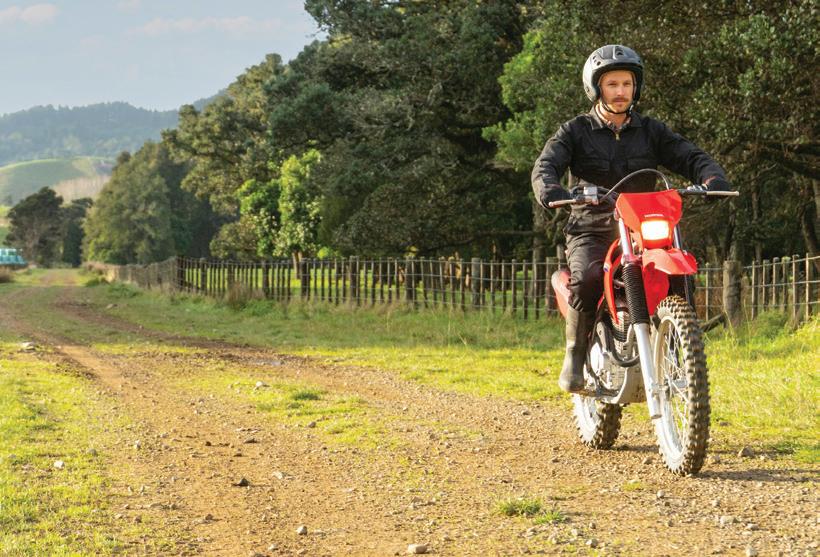
Join us at the Wharariki Wetlands (paddocks either side of Cape Farewell Road) on 23rd of June, at 12pm as HealthPost Staff and members of the community plant 1,000 trees.
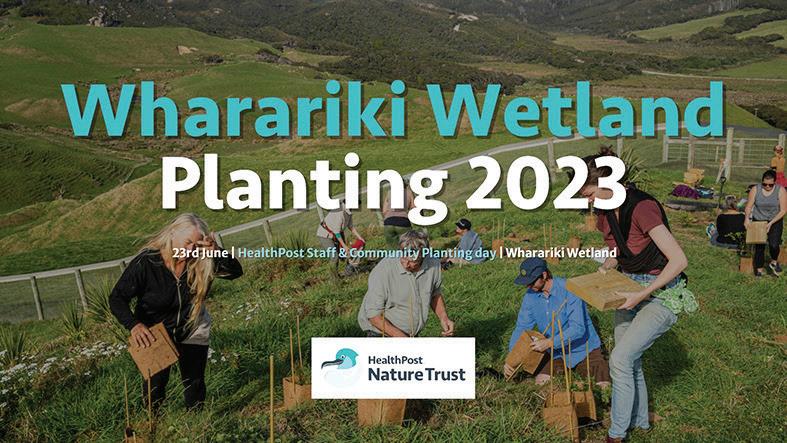
It is likely there will be a follow up day on the 24th June after the staff day for community to help out with any leftover trees as well.
80th Annual Thomas Cawthron Memorial Lecture: Ice and us.
Tue Jun 27, 2023, at 05:00 pm, Nelson Centre of Musical Arts, 48 Nile Street









Join us for the 80th Annual Thomas Cawthron Memorial Lecture with acclaimed New Zealand scientists Professor Tim Naish and Professor Richard Levy, as they discuss the impact of climate change on rising sea levels and how communities can adapt to these changes. The keynote will include supporting presentations by Cawthron’s Dr Anna Berthelsen and Jacqui Stuart.

This year we are inviting guests to network over complimentary nibbles and a cash bar prior to the lecture starting. Doors will open at 5pm and the lecture will begin at 6pm sharp.
This is a free event, but tickets are limited, and registration is essential. Register by heading to www.eventbrite.co.nz
The Rural Noticeboard is for local not-for-profit community groups and organisations to advertise community events or projects that will be of interest to our 35,000 rural readers over the top of the south. Thanks to the team at Tasman Honda for making this noticeboard possible. If you have an up-and-coming project or event that you wish to place on this noticeboard, please contact eloise@topsouthmedia.co.nz
Get Emergency Prepared EVENING - with the Nelson Women’s Centre



Tue Jun 20, 2023, at 05:15 Nelson Women’s Centre, 44 Trafalgar Street, Nelson



With so much happening, we all know that emergencies can happen anytime, anywhere. Together we will work through the steps to be prepared.
Tasman Valley
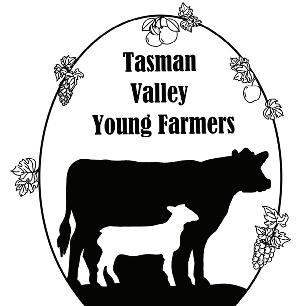
Club is a place to meet new people, connect with the food and fibre sector and have some fun.
If you are aged between 16 – 31 years old, then come and join us for a meal or just a drink. 7pm on the 14th of June at the Tapawera Hotel No RSVP needed Just turn up!
You will walk away with the resources to create your own emergency response plan. We will cover the physical and psychological effects of emergencies, how and what to prepare, and tips on what to do before, during, and after an emergency. We also have a daytime session on 13 June
Cost: Free of charge (but please book in)
To book: phone (03) 546 7986 Or drop by the front reception to inquire and sign-up.
The Nelson Women’s Centre team will utilise their wealth of emergency response training, first aid training, and other experience to deliver a clear and impactful workshop.
Notice Board Farming TOP SOUTH MONTHLY June 2023 35
Young Farmers











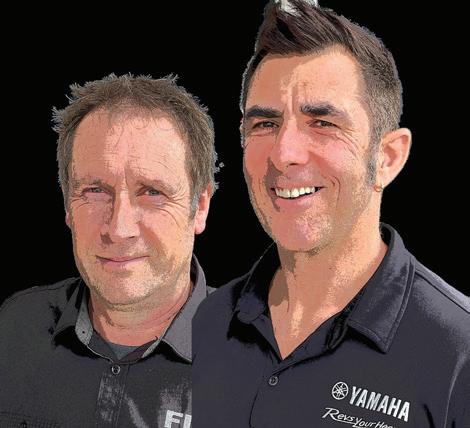



$15,086 excl Kodiak 450 Power steering, 4WD Specialised farm bike $4,434 excl If you need to upgrade your Yamaha workhorse it is vital you back order now. FILCO CALL US NOW! 03 547 2420 Powerful 850cc, 4WD, larger tip deck, high profile suspension. Wolverine X2 Ute $17,477 excl Kodiak 700 Power steering, 4WD $13,912 excl Kodiak 450 Non power steering (blue) KVF 300 2WD, 4 Wheeler solid performer on flats and roaded hills. GREAT PRICE AT $7,822 +gst RELIABLE AND TOUGH MULE PRO MX $23,039 $6,604 excl FILCO SOLUTIONS Kawasaki Mule SX 2x4 $15,213 excl KAF M ule Bigfoot 4x4 $17,822 excl FARM & SPORT ANNESBROOK NELSON www.filco.co.nz Rod Payne & Dave Filer A fond farewell to this top farm bike, limited stock so be quick. Once they’re gone, no more! KL250 STOCKMAN 0% DEPOSIT - 0 REPAYMENTS FOR 12 MONTHS All at a competitive 6.9% fixed rate! Filco Yamaha make it easy to upgrade your farm bikes. Limited time offer! FIELD DAY SPECIALS Buy or upgrade into a new Kawasaki Farm bike and we will give you up to $1500 to put towards any genuine accessories! A windscreen, tray anything to make your job on the farm easier. Celebrate the Field Days with us! ON SELECTED KAWASAKI MULE SIDE BY SIDES UP TO $1500 36 June 2023 Advert Farming TOP SOUTH MONTHLY













































































































































































 Isaac Ludlow
Isaac Ludlow
















































 JOHN BARNES Managing Director Fertilizer New Zealand
JOHN BARNES Managing Director Fertilizer New Zealand











































